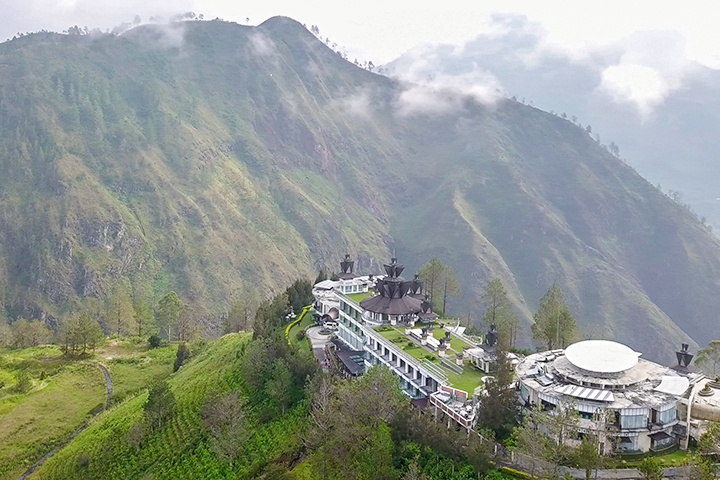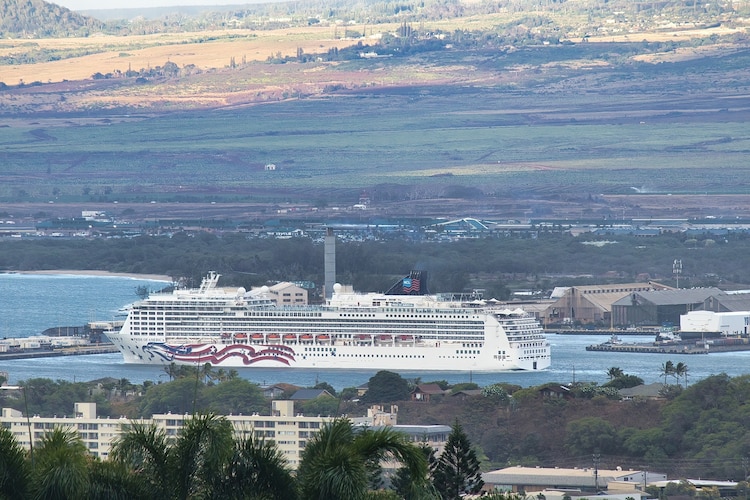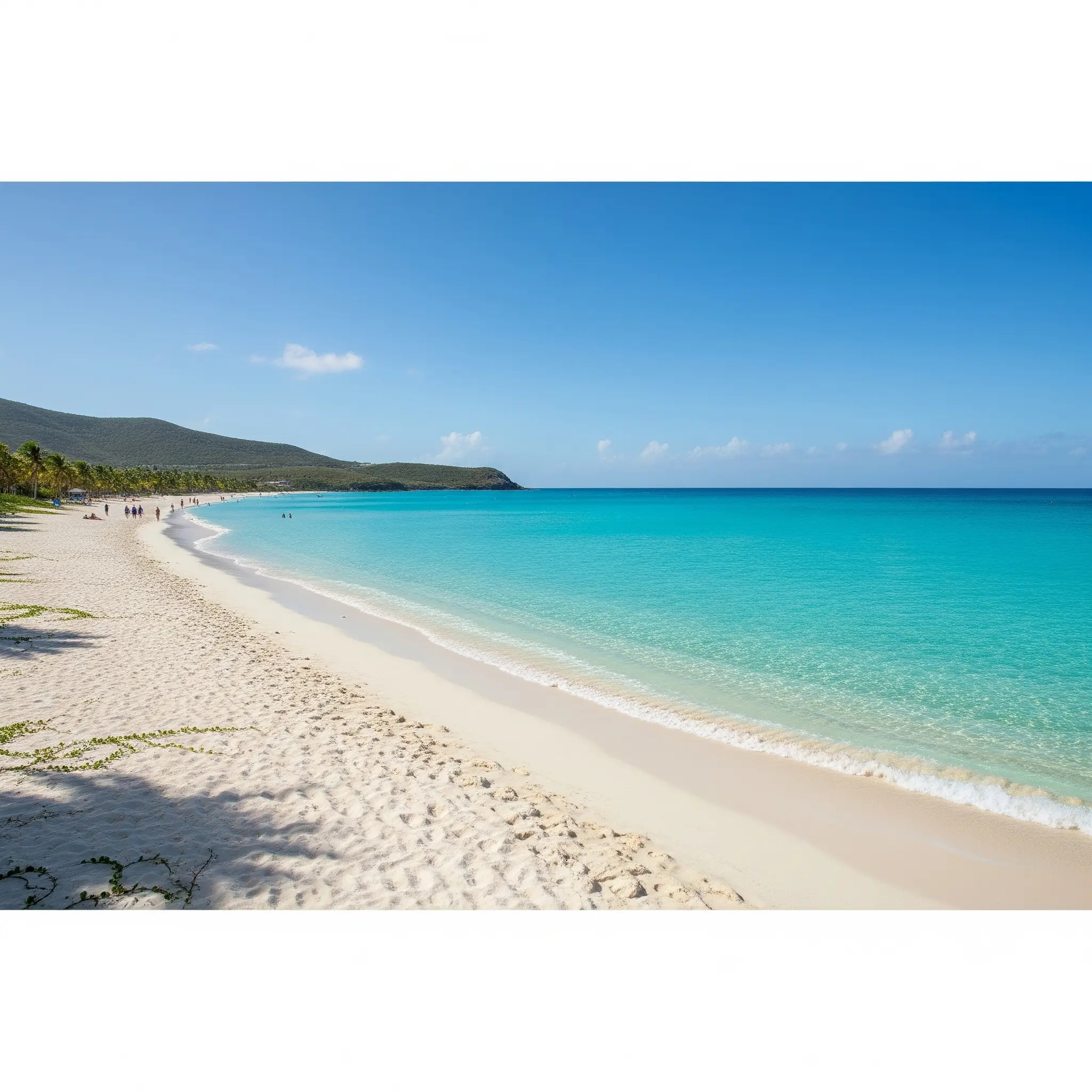
Indonesia is a land of breathtaking contrasts, where ancient temples rest beside bustling cities, volcanic mountains rise above emerald rice fields, and turquoise waters cradle pristine beaches and vibrant coral reefs. With over 17,000 islands scattered across the equator, Indonesia offers a kaleidoscope of natural wonders, rich cultural heritage, and unforgettable experiences—making it one of the most captivating travel destinations in the world.
From the serene landscapes of Bali to the wild jungles of Borneo, every corner of the country tells a story. Whether you’re seeking spiritual solace at Borobudur Temple, chasing sunsets in the Gili Islands, diving with manta rays in Raja Ampat, or trekking up Mount Bromo for a surreal sunrise, there’s something for every type of traveler. Indonesia is not just a destination; it’s a journey through diversity—of people, languages, cuisine, and landscapes.
In this guide, we’ve curated 100 popular destinations in Indonesia. These places have not only captured the hearts of millions of visitors but also hold deep cultural and historical significance for locals. Some are world-famous icons, while others are hidden gems waiting to be explored.
Whether you’re planning your first trip to Indonesia or returning to uncover more of its charm, this comprehensive list will inspire your itinerary. Along the way, you’ll also find recommended hotels to ensure your stay is as memorable and comfortable as your adventure.
So, grab your map (or open your travel app), and get ready to explore the magic of Indonesia one destination at a time.
Discover the 100 Popular Destinations in Indonesia
1. Popular Destinations in Indonesia: Bali Island

First Popular Destinations in Indonesia is a Bali. Bali, the enchanting island of the gods, has long been a world tourism favorite. This island not only offers natural beauty, but also a rich culture and friendly people. Every corner of Bali has its own characteristics, from exotic beaches in the south, terraced rice fields in the middle, to stunning marine life in the east and north. This article will take you to explore Bali from South to West, complete with the best hotel recommendations for an unforgettable stay.
Here are the list of Top Destinations in Bali:
South Bali: Beaches, Nightlife and Modern Charm
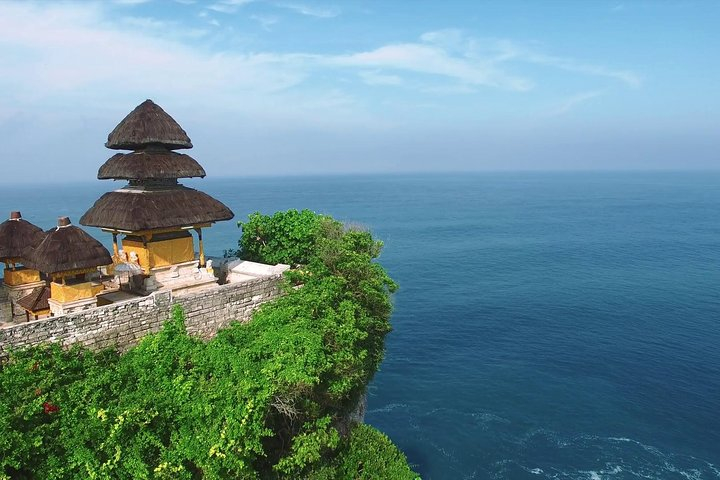
South Bali is the most developed tourism center. This area includes Kuta, Seminyak, Canggu, Jimbaran, and Uluwatu. This is where white sandy beaches meet dramatic sunsets, international restaurants, luxury beach clubs, and lively nightlife.
Kuta and Seminyak: Entertainment and Shopping Centers
Kuta is known for its surfing beaches and Legian Street, which is full of nightlife. Seminyak offers a more modern and elegant version, with high-end boutiques and fine dining restaurants.
Hotel Recommendation: The Seminyak Beach Resort & Spa

This hotel offers direct views of the Indian Ocean, complete with an infinity pool and direct beach access. Luxurious facilities, friendly service, and strategic location make it an ideal choice for travelers looking for comfort and style.
Canggu: Heaven for Digital Nomads and Surfers
Canggu has developed rapidly in recent years. This area is a favorite of digital nomads because of its widespread coworking spaces, healthy cafes, and active community.
Recommended Hotel: COMO Uma Canggu
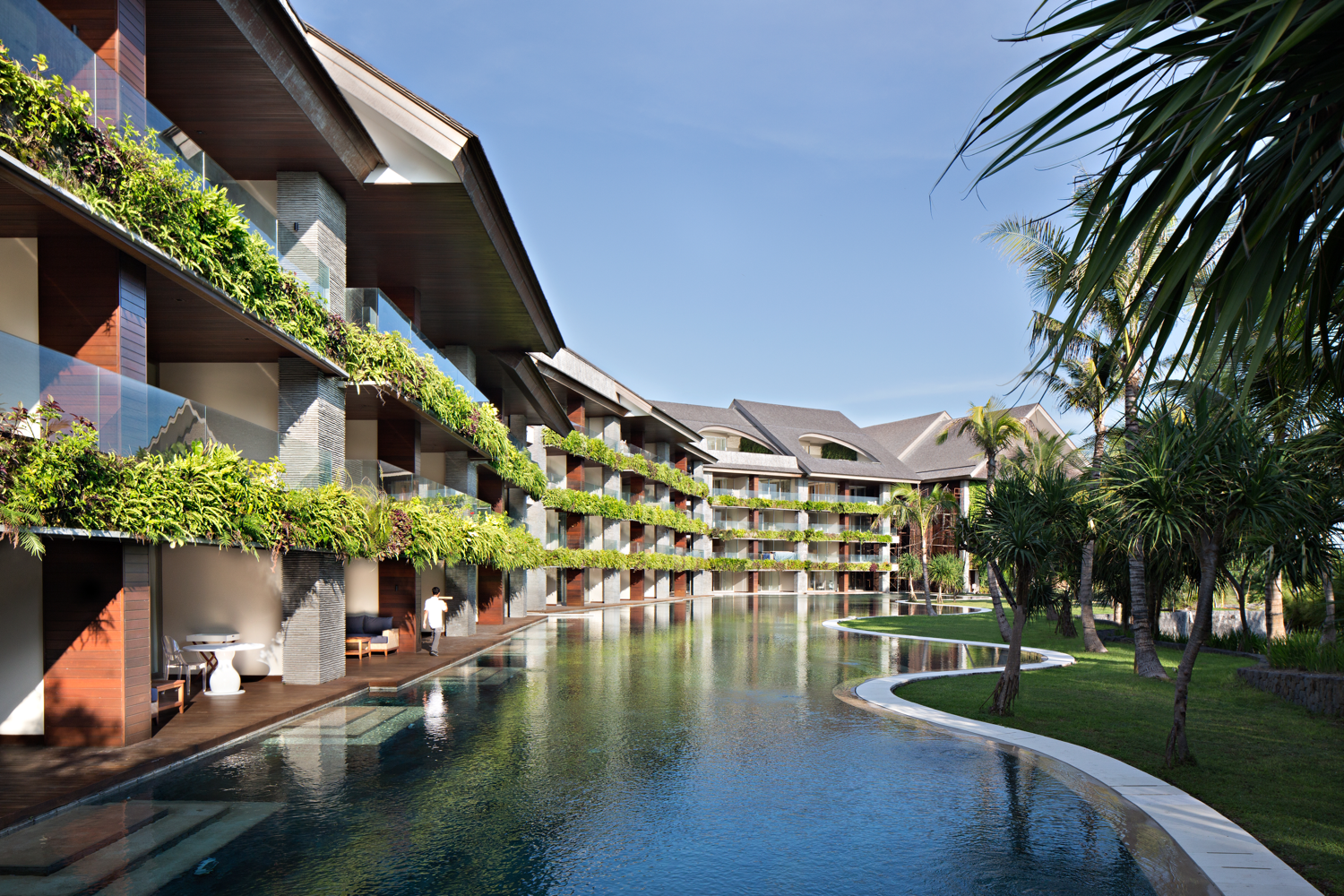
With a modern architectural design that combines local elements, COMO Uma offers a relaxing stay experience. The hotel also provides yoga classes and an organic restaurant.
Uluwatu and Jimbaran: Exclusive and Romantic
Uluwatu is famous for its steep cliffs and the sacred Pura Luhur Uluwatu Temple. Jimbaran is the ideal place to enjoy fresh seafood on the beach at sunset.
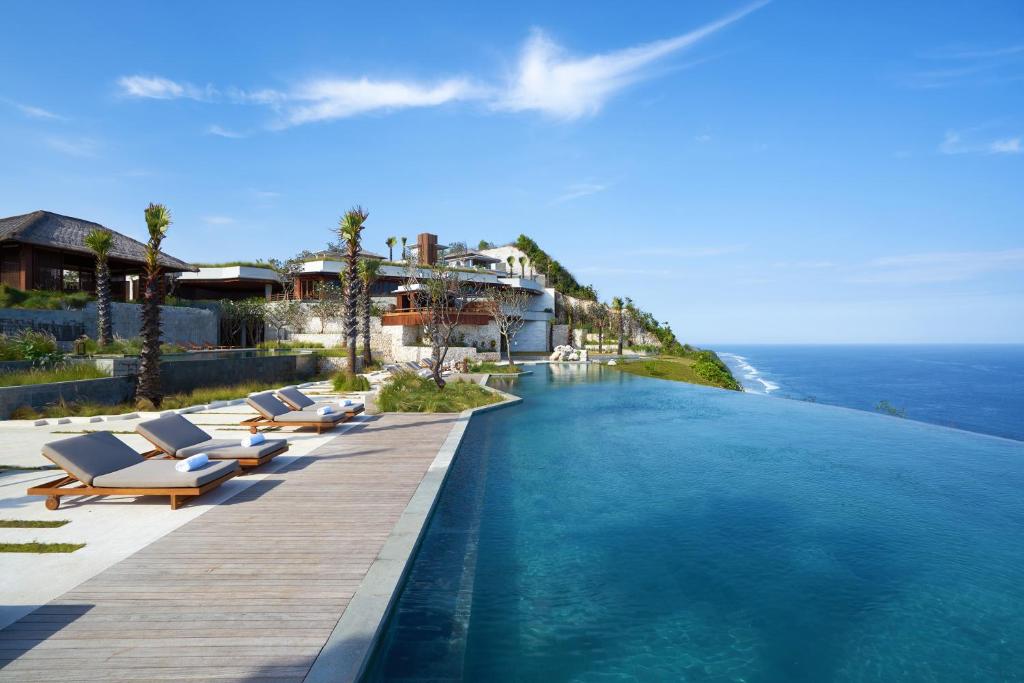
Recommended Hotel: Six Senses Uluwatu
Six Senses combines luxury with sustainability. The villas face the ocean and are built with eco-friendly principles. Spa experiences and healthy food are the main attractions.
Central Bali: A Calming Soul of Culture and Nature
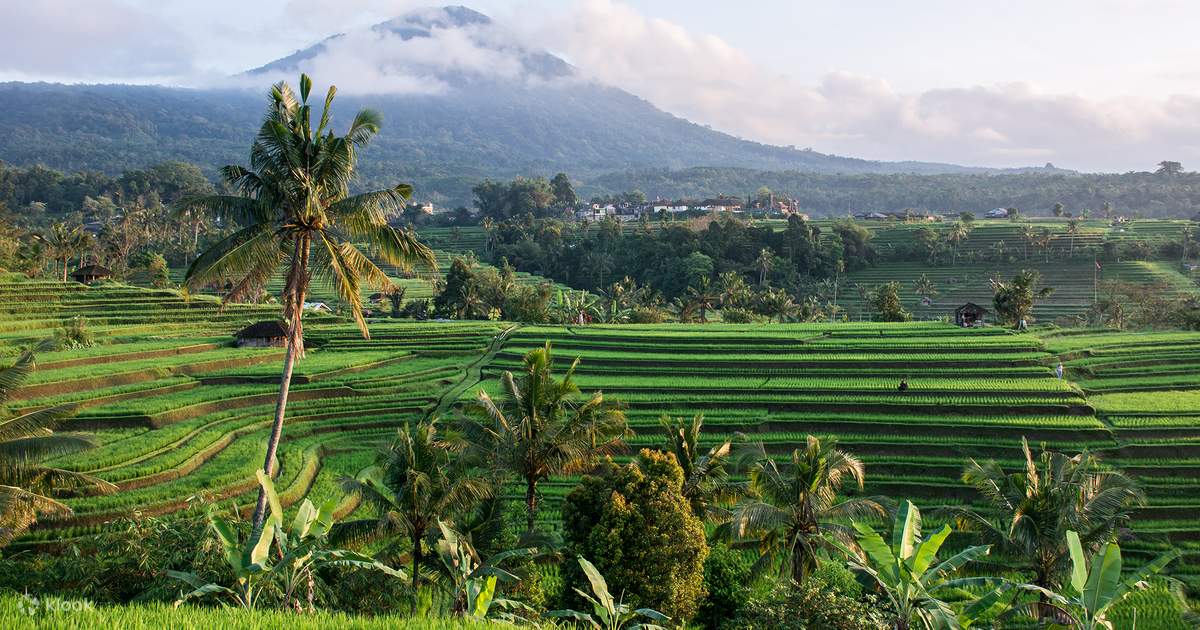
Central Bali, especially Ubud and its surroundings, is the cultural and spiritual heart of the island. Surrounded by iconic terraced rice fields, lush tropical forests, and temples and art galleries that exude a sense of serenity, Ubud is perfect for travelers looking to explore a more serene and reflective side of Bali.
Ubud: A Center for Art, Yoga, and Traditional Life
Ubud is renowned for its peaceful atmosphere and balance between nature and culture. From the Monkey Forest, home to long-tailed macaques, to the Ubud art market and nightly traditional dance performances, Ubud offers authentic Balinese cuisine.
Recommended Hotel: Alila Ubud
Located above the Ayung River valley, Alila Ubud offers a truly serene experience. The architectural design blends in with the surrounding nature, and its famous swimming pool overlooks the tropical forest.
Tegalalang and Surrounding Villages
Tegalalang is home to the rice terraces that often appear on Balinese postcards. Villages such as Petulu and Keliki also offer experiences living with the local community through homestay programs and art workshops.
Recommended Hotel: The Kayon Jungle Resort
Located amidst jungle and rice fields, Kayon Jungle Resort is perfect for couples or honeymooners. Its facilities include a three-level sky pool and a hilltop restaurant.
North Bali: Peaceful Nature and Marine Tourism
North Bali, especially the Lovina area and its surroundings, offers a different experience from the southern side of the island. This area is known for its black sand beaches, stunning underwater life, and a rural atmosphere far from the tourist crowds.
Lovina: Greet Dolphins in the Open Sea
Lovina is the best place to see wild dolphins that appear at sunrise. Tourists can take a traditional boat to witness this natural attraction — a peaceful and memorable experience.
Recommended Hotel: The Lovina Bali Resort
The Lovina offers villas with private pools and a relaxing natural spa. The hotel has direct beach access and organizes dolphin watching tours every morning.
Banjar Hot Springs and Brahma Arama Temple
Near Lovina, there are Banjar natural hot springs surrounded by green gardens. Not far from there, the Brahma Arama Temple stands as the largest Buddhist meditation center in Bali, providing a unique spiritual energy in the middle of the Hindu island.
Recommended Hotel: Zen Resort Bali
Zen Resort is located in the mountains with stunning ocean views. The hotel is renowned for its yoga and ayurveda programs, making it a favorite destination for health retreats and inner peace.
East Bali: Cultural Heritage and Diving Paradise
East Bali is one of the areas most rich in authentic Balinese traditions. This area includes Karangasem, Amed, Candidasa, and the surrounding areas. Its natural beauty is still very natural and has not been touched by mass tourism. Suitable for tourists who want to explore the authentic side of Bali.
Karangasem and Besakih Temple: Bali’s Spiritual Footprint
On the slopes of Mount Agung stands Pura Besakih, the largest and oldest Hindu temple in Bali. It is considered a sacred spiritual center, and has always been the site of major Balinese Hindu ceremonies.
Recommended Hotel: Mathis Lodge Amed
The hotel is located on top of Amed hill with dramatic sea and mountain views. Guests can enjoy sunrise from private balconies and dive on hidden beaches below.
Amed and Tulamben: A Diver’s Paradise
Amed and Tulamben are two of Bali’s most famous dive sites. Tulamben is home to the wreck of the USS Liberty, home to thousands of tropical fish — a favorite destination for divers from around the world.
Hotel Recommendation: The Griya Villas and Spa
Situated on the hillside of Amed, The Griya offers luxurious villas with unrivaled ocean views. Snorkeling and diving facilities are available directly from the hotel.
Candidasa: Tranquil and Exotic
Candidasa offers a beach with a serene atmosphere and an old Balinese village atmosphere. This place is perfect for couples looking for a romantic honeymoon.
Hotel Recommendation: Candi Beach Resort and Spa
With tropical-style buildings and lush gardens, this resort offers a peaceful atmosphere that is hard to beat. There is a natural spa, a seaside restaurant and rooms with private balconies.
West Bali: Wilderness, Conservation and Tranquility
West Bali is the area least visited by tourists, but this is where the authenticity of Bali is maintained. West Bali National Park is a habitat for rare animals such as the Bali Starling. This area is ideal for nature lovers and ecotourism.
West Bali National Park: Forest and Coral Reef Exploration
West Bali National Park includes forests, savanna, mangroves, and marine waters. Visitors can trek, birdwatch, and snorkel on Menjangan Island, one of the best underwater sites in Indonesia.
Recommended Hotel: Plataran Menjangan Resort & Spa
Read Also: Desa Potato Head: A Leader in Sustainable Luxury
Situated within a national park, the resort blends seamlessly with its surroundings. You can spot wild deer right from your room’s balcony, or dive in the exotic coral reefs just 10 minutes from the resort’s beach.
Pemuteran: Marine Conservation Village
Pemuteran is known as a conservation village that actively protects coral reefs. The bio-rock project here is one of the largest artificial coral restoration systems in the world.
Recommended Hotel: Taman Sari Bali Resort & Spa
With its Balinese architecture and beachfront location, Taman Sari Resort is an ideal place for divers and marine lovers. It features a conservation center, natural spa and fresh seafood restaurant.
Conclusion: Discovering the True Bali Through Every Corner
Bali is more than just beaches and parties. From the modern south to the wild west, each region offers a unique experience that will stir the soul. Innovations in tourism such as eco-resorts, cultural preservation, and digital nomad-friendly areas have enriched Bali’s identity without losing its original values. Hopefully, this guide will help you design a deeper and more meaningful dream vacation to Bali.
2. Popular Destinations in Indonesia: Raja Ampat

Second Popular Destinations in Indonesia is a Raja Ampat. Raja Ampat, located off the coast of West Papua, is one of the most breathtaking travel destinations in the world. Known for its rich marine biodiversity, this archipelago is not only a haven for divers but also a thriving community where tradition and innovation come together. Raja Ampat is a living example of sustainable tourism in action.
Where is Raja Ampat and How to Get There?
The Raja Ampat archipelago consists of more than 1,500 small islands, with four major ones: Waigeo, Batanta, Salawati, and Misool. Most visitors fly into Sorong, then take a ferry or speedboat to Waisai, the capital of Raja Ampat Regency.
A Marine Wonderland
The Global Center of Marine Biodiversity
Often dubbed the “Amazon of the Seas,” Raja Ampat is home to over 75% of all coral species on Earth. It is considered the world’s number one diving destination.
Top Snorkeling and Diving Spots
- Cape Kri: Holds the world record for the highest number of fish species spotted in a single dive.
- Misool: Offers non-stinging jellyfish lakes and protected shark zones.
- Manta Sandy: A hotspot to witness majestic manta rays.
- Blue Magic: Known for its strong currents and incredible coral formations.
Local Culture and Community Life
The Rich Traditions of the Papuan People
The indigenous Maya people of Raja Ampat live in harmony with nature. They lead conservation efforts and manage tourism through community-based homestays and marine zoning.
Innovations Driving Sustainable Tourism
- Community-led Marine Protection: Locals manage marine zones to preserve coral reefs and fish populations.
- Eco Homestays: Tourism revenue is reinvested into the local economy while minimizing environmental damage.
- Youth Education in Conservation: Cultural programs and environmental awareness for the younger generation ensure long-term sustainability.
Top Recommended Hotels and Eco-Resorts in Raja Ampat
1. Misool Eco Resort
Located on a private island within a marine reserve, Misool Eco Resort offers ultimate exclusivity and eco-conscious comfort. Built from reclaimed wood and powered by solar energy.
Highlights:
- Overwater bungalows
- Daily diving/snorkeling packages
- Locally sourced meals
- Coral reef restoration programs
2. Papua Paradise Eco Resort (Birie Island)
This resort offers overwater villas with sunrise and sunset views — ideal for romantic escapes or peaceful solo retreats.
Highlights:
- Private decks with sea views
- Traditional Papuan spa treatments
- On-site PADI dive center
- Guided cultural village tours
3. Waiwo Dive Resort (Waisai)
Strategically located near Waisai, this resort is perfect for travelers who want easy access to dive sites and local amenities.
Highlights:
- Comfortable rooms and wooden bungalows
- Local and international cuisine
- Island-hopping tour services
- Professional dive facilities
4. Korpak Villa & Resort
This resort blends modern amenities with a traditional feel, perfect for families and groups.
Highlights:
- Fully equipped private villas
- Trekking paths with panoramic sea views
- Easy access to snorkeling spots
- Laundry and authentic Papuan cuisine
Essential Travel Tips for Raja Ampat
What to Prepare
- Bring reef-safe sunscreen and eco-friendly toiletries.
- Personal snorkeling gear is recommended.
- Respect local customs and dispose of waste responsibly.
- Visit during the dry season (October to April) for the best visibility.
Connectivity and Tech
- Internet access is limited across the islands.
- Download maps and offline info in advance.
- Some resorts are powered by solar energy and equipped with green tech.
- Booking accommodations and transport in advance is crucial.
Final Thoughts: Travel with Purpose
Raja Ampat is more than a destination — it’s a model for how travel can support local communities and protect the planet. Through thoughtful innovation, community empowerment, and sustainable tourism, Raja Ampat remains pristine and inviting. By choosing to travel here, you become part of the solution — preserving this incredible ecosystem for generations to come.
3. Popular Destinations in Indonesia: Lake Toba

Third Popular Destinations in Indonesia is a Lake Toba. Lake Toba Located in North Sumatra, Lake Toba is the world’s largest volcanic lake and one of Indonesia’s natural wonders. Spanning over 1,145 square kilometers with a depth of 450 meters, Lake Toba offers not only breathtaking views but also a rich cultural and historical experience.
Lake Toba’s Role in the Lives of the Local Community
For the Batak people living around the lake, Toba is more than just a tourist attraction. It is a vital source of livelihood and an integral part of their cultural identity. Traditional houses (Rumah Bolon), customs, music, and dance performances all contribute to the immersive cultural journey for visitors.
The Impact of Innovation and Infrastructure Development
As part of the government’s “10 New Balis” program, Lake Toba has become a top priority for tourism development. Silangit Airport’s upgrade to an international hub has made travel to the lake much easier. Roads and visitor facilities have been significantly improved.
Eco-tourism programs and community empowerment initiatives have also helped preserve the environment and culture, while simultaneously boosting the local economy.
Top Tourist Attractions Around Lake Toba
1. Samosir Island
Located at the heart of the lake, this island is a cultural and natural gem. Explore traditional villages like Tomok and Ambarita, witness the Sigale-gale puppet dance, or rent a motorbike to discover its scenic beauty.
2. Holbung Hill
Also known as Teletubbies Hill, this spot offers a panoramic view of Lake Toba—perfect for sunrise watching or camping with friends.
3. Sipiso-piso Waterfall
Near the village of Tongging, this 120-meter waterfall is one of the highest in Indonesia. It’s a favorite photo spot with a stunning backdrop of the lake.
4. Lumban Suhi-suhi Tourism Village
This village is renowned for its handwoven traditional ulos cloth. Visitors can try weaving or buy beautiful, authentic souvenirs directly from local artisans.
Best Hotels Near Lake Toba
1. Taman Simalem Resort
Features:
- Located on a highland with magnificent views of the lake
- Organic garden, tea plantation, and outbound areas
- Various accommodation types including villas and family rooms
Location: Merek, Karo Regency
Price: Starts from IDR 1,200,000 per night
2. Hotel Niagara Parapat

Features:
- Outdoor swimming pool
- Restaurant offering both local and international cuisines
- Strategic location with direct lake access
Location: Parapat, Simalungun Regency
Price: Starts from IDR 750,000 per night
3. Samosir Villa Resort

Features:
- Lakeside swimming pool
- Close to Tomok tourist sites
- Traditional design with modern comforts
Location: Tuk Tuk, Samosir Island
Price: Starts from IDR 900,000 per night
Unmissable Activities at Lake Toba
1. Lake Cruising
Rent a boat to explore the lake, visit Samosir Island, and witness a spectacular sunset from the water.
2. Taste Batak Culinary Delights
Don’t miss signature dishes like arsik (spicy carp), naniura (Batak-style sashimi), and saksang (spiced meat dish).
3. Lake Toba Cultural Festival
Held annually, this event showcases traditional performances, competitions, and local music and dance. Plan your trip around this time for a full experience.
Travel Tips and Best Time to Visit
- Best Time: June to August when the weather is pleasant and many events are held.
- Transport: From Medan, travel by car or bus for 4–6 hours to reach Parapat or Balige, or fly into Silangit Airport.
- Clothing: The weather can be chilly, especially at night. Bring a jacket and comfortable shoes.
4. Popular Destinations in Indonesia: Labuan Bajo

Fourth Popular Destinations in Indonesia is a Labuan Bajo. Labuan Bajo, located at the western tip of Flores Island in East Nusa Tenggara, has transformed from a quiet fishing village into a world-class tourist destination. With its exceptional natural beauty, vibrant local culture, and fast-growing infrastructure, Labuan Bajo has become a must-visit spot for travelers seeking unique and immersive experiences.
The Importance of Labuan Bajo to the Local Community
New Economic Opportunities from Tourism
Once a humble coastal town, Labuan Bajo now thrives as a tourism hub. The local economy has been significantly boosted by the tourism industry, creating jobs in guiding, hospitality, culinary ventures, and local craftsmanship.
Cultural and Environmental Preservation
As international visitors arrive, the local community has become more committed to preserving their natural surroundings and cultural traditions. Conservation efforts are now community-based, empowering locals to protect their environment while benefiting from it.
The Impact of Innovation and Infrastructure on Tourism
As one of the Indonesian government’s “Five Super Priority Destinations,” Labuan Bajo has received significant investment. The Komodo Airport has been upgraded to serve international flights. Roads, ports, and the city’s waterfront area have also undergone modern revitalization—making the destination more accessible and tourist-friendly.
Top Places to Visit in Labuan Bajo
1. Komodo Island
A UNESCO World Heritage Site, Komodo Island is home to the ancient Komodo dragons. Visitors can trek through the island to see these majestic creatures up close in their natural habitat.
2. Padar Island
Famous for its iconic hilltop view, Padar offers dramatic scenery, especially during sunrise. Though the hike to the top can be challenging, the panoramic reward is absolutely worth it.
3. Pink Beach
One of only a few pink sand beaches in the world. The blush color comes from a blend of white sand and red coral fragments. It’s a favorite snorkeling and sunbathing spot.
4. Manta Point
A dream for divers and snorkelers alike. Swim with gentle giant manta rays in crystal-clear waters while observing marine biodiversity in its purest form.
Top-Rated Hotels in Labuan Bajo
1. Ayana Komodo Waecicu Beach

Highlights:
- Private beach access
- Oceanview rooms with private balconies
- Rooftop bar and gourmet dining
Location: Waecicu Beach
Rate: Starting from IDR 3,500,000/night
2. Sudamala Resort, Seraya

Highlights:
- Beachfront bungalows
- On-site snorkeling
- Spa and tropical dining
Location: Seraya Island
Rate: Starting from IDR 2,800,000/night
3. Meruorah Komodo Labuan Bajo
:strip_icc():format(webp)/kly-media-production/medias/4426827/original/076859100_1684035737-KYW01685.JPG)
Highlights:
- Modern hotel in the city center
- Infinity pool overlooking the harbor
- Direct access to Marina Bay
Location: Downtown Labuan Bajo
Rate: Starting from IDR 2,500,000/night
Unforgettable Activities in Labuan Bajo
1. Liveaboard Sailing Adventures
Join a multi-day sailing trip on a traditional pinisi boat. Explore nearby islands like Rinca, Kelor, and Kalong while sleeping under the stars—an experience unlike any other.
2. Snorkeling and Diving
Sites like Batu Bolong, Castle Rock, and Kanawa Island boast colorful coral reefs, tropical fish, and some of the world’s clearest waters.
3. Savor Local Cuisine
Try dishes like grilled spicy fish (ikan rica-rica), Flores-style beef (se’i sapi), and the world-famous Flores coffee for a true taste of the island.
Tips for Visiting Labuan Bajo
- Best Time to Visit: April to October, during the dry season.
- Getting There: Direct flights available from Jakarta and Bali to Komodo Airport.
- What to Bring: Comfortable shoes, light trekking gear, swimwear, and reef-safe sunscreen.
- Respect Local Customs: Follow conservation rules and support local businesses whenever possible.
5. Popular Destinations in Indonesia: Yogyakarta City
Fifth Popular Destinations in Indonesia is a Yogyakarta. Yogyakarta, affectionately known as “Jogja,” stands as a vibrant testament to Indonesia’s rich cultural and historical tapestry. Nestled on Java Island, this city seamlessly blends age-old traditions with contemporary innovations, offering travelers an experience that’s both authentic and modern. This article delves into Yogyakarta’s premier attractions, their significance to the local populace, the transformative impact of innovation on tourism, and top accommodation recommendations.
Must-Visit Attractions in Yogyakarta
1. Borobudur Temple
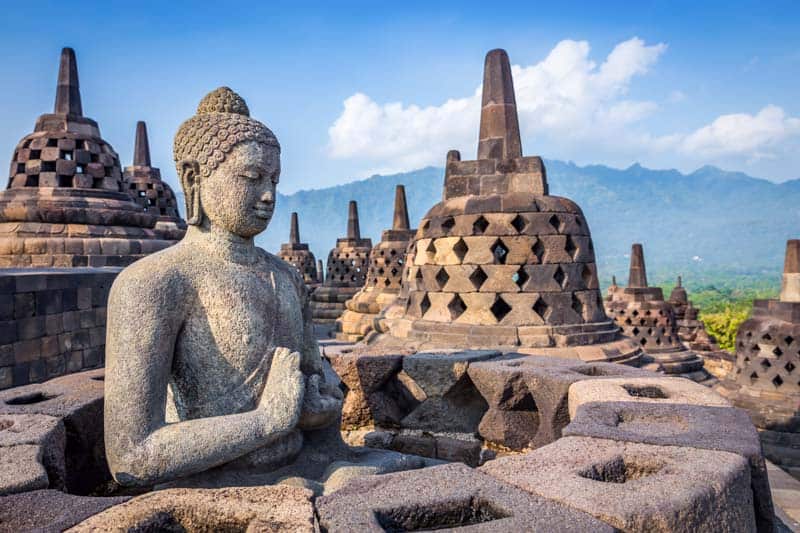
Approximately 40 km from Yogyakarta’s heart lies Borobudur, the world’s largest Buddhist temple. Constructed in the 9th century, its intricate reliefs and grand architecture symbolize the zenith of ancient Javanese civilization, drawing global visitors eager to witness its splendor.
2. Prambanan Temple

As Indonesia’s most expansive Hindu temple complex, Prambanan captivates with its towering spires and detailed carvings depicting the Ramayana epic. Located about 17 km from the city center, it exemplifies the historical confluence of Hindu and Buddhist cultures in Java.
3. The Kraton (Yogyakarta Palace)

The Kraton serves as the official residence of Yogyakarta’s Sultan and remains a vibrant center of Javanese culture. Beyond its royal functions, the palace hosts traditional ceremonies and art performances, offering visitors a deep dive into Javanese heritage.
4. Taman Sari (Water Castle)
Once a royal garden for the Sultanate, Taman Sari now stands as a historical site showcasing unique architecture and providing insights into the leisurely pursuits of the royal family in bygone eras.
5. Malioboro Street
Malioboro is Yogyakarta’s bustling shopping and culinary hub. Lined with shops selling batik and handicrafts, and street vendors offering local delicacies like gudeg, it becomes especially lively at night with street performances enhancing its vibrant atmosphere.
Tourism’s Role in Local Life
Tourism significantly influences Yogyakarta’s socio-economic landscape. Many locals engage in tourism-related occupations, from guiding and crafting to hospitality and culinary ventures. This influx of visitors fosters cultural preservation, as there’s a heightened emphasis on showcasing authentic Javanese traditions to the world.
Innovation’s Impact on Yogyakarta’s Tourism
Yogyakarta’s tourism sector has embraced innovation through infrastructure enhancements, improved transportation, and the development of tourist-friendly amenities. Collaborations between the government and local communities have birthed cultural villages, offering immersive experiences. However, rapid tourism growth also presents challenges like congestion and cultural commodification, necessitating sustainable planning.
Recommended Hotels in Yogyakarta
Here are some top accommodation options in Yogyakarta:
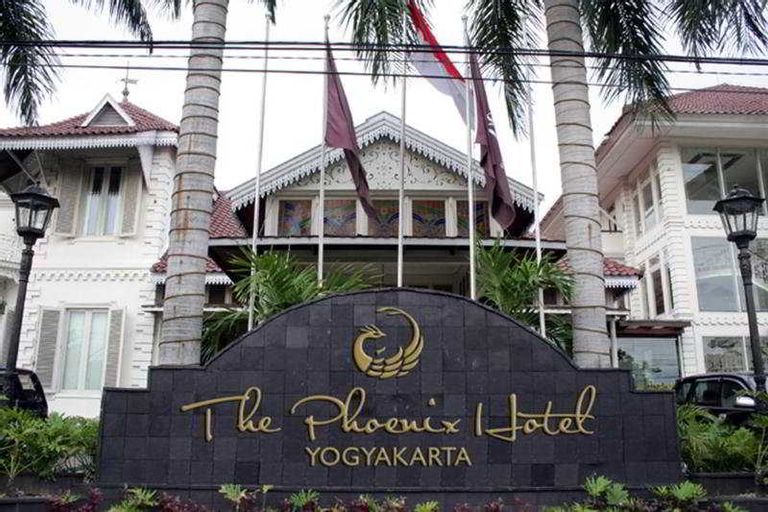
1. The Phoenix Hotel Yogyakarta
Exuding colonial-era elegance, The Phoenix Hotel offers a luxurious stay in the city’s heart, providing easy access to major attractions.
Key Amenities:
- Outdoor swimming pool
- Spa and fitness center
- Restaurant serving both international and local dishes
Location: Jl. Jenderal Sudirman No.9, Yogyakarta
Rates: Starting from IDR 1,200,000/night
2. Melia Purosani Yogyakarta

Melia Purosani seamlessly blends Javanese cultural touches with modern comforts, situated close to Malioboro and the Kraton.
Key Amenities:
- Lagoon-style swimming pool
- Traditional Javanese spa
- Multiple dining options and bars
Location: Jl. Suryotomo No.31, Yogyakarta
Rates: Starting from IDR 1,000,000/night
3. Jambuluwuk Malioboro Hotel Yogyakarta

Offering modern comforts at an affordable price, Jambuluwuk Malioboro is conveniently located near the city’s main attractions.
Key Amenities:
- Rooftop swimming pool
- Fitness center
- Restaurant with local and international cuisine
Location: Jl. Gajah Mada No.67, Yogyakarta
Rates: Starting from IDR 750,000/night
6. Popular Destinations in Indonesia: Mount Rinjani

Next Popular Destinations in Indonesia is Mount Rinjani. Mount Rinjani is the second highest volcano in Indonesia and a paradise for climbers. It is known for the beautiful Segara Anak Lake in its caldera and its stunning sunrise views.
Recommended hotel: Rinjani Lodge, which offers direct views of the mountain and modern facilities.
7. Popular Destinations in Indonesia: Komodo National Park
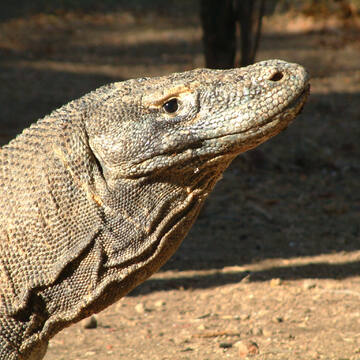
© Evergreen
Author: Evergreen
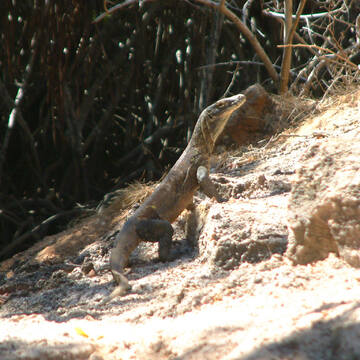
© Evergreen
Author: Evergreen
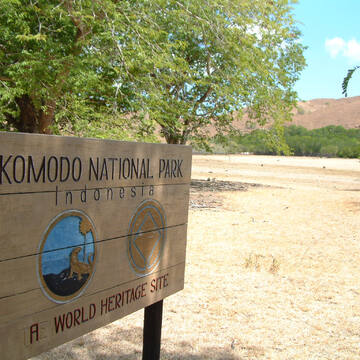
© Evergreen
Author: Evergreen
Next Popular Destinations in Indonesia is Komodo National Park. Located between the islands of Sumbawa and Flores in the Indonesian archipelago, Komodo National Park is a UNESCO World Heritage Site famous for its prehistoric inhabitants—the Komodo dragons, the world’s largest lizards. But beyond these majestic reptiles, the park is a natural wonder filled with exotic landscapes, marine biodiversity, and authentic Indonesian culture.
Tourist Attractions
The main attraction of the park is, of course, the Komodo dragons. These powerful reptiles can be seen on Komodo Island and Rinca Island, two of the park’s main islands. Guided treks with local rangers allow visitors to observe the dragons safely in their natural habitat, often sunbathing, feeding, or patrolling their territory.
Apart from the dragons, the park is home to stunning beaches, rugged hills, and breathtaking viewpoints. One of the most iconic locations is Padar Island, known for its surreal landscape of jagged hills and three different-colored beaches—white, black, and pink. The hike to the top of Padar is challenging but offers one of the best panoramic views in Indonesia.
Another must-visit is the famous Pink Beach, where the sand has a rosy hue due to crushed red coral. It’s a great spot for swimming, relaxing, and snorkeling.
Diving and snorkeling are top-tier in Komodo National Park. The waters are part of the Coral Triangle and contain some of the richest marine biodiversity on Earth. Sites like Manta Point, Crystal Rock, and Batu Bolong offer the chance to see manta rays, turtles, reef sharks, and vibrant coral gardens.
Accommodation and Hotels
The gateway to Komodo National Park is the coastal town of Labuan Bajo on Flores Island. While the park itself has no commercial hotels, Labuan Bajo offers a variety of accommodations from budget lodges to luxury resorts.
For luxury stays, Ayana Komodo Resort stands out with its beachfront location, infinity pool, and ocean-view rooms. It also offers private boat tours and diving excursions into the park.
For a mid-range option, Bajo Komodo Eco Lodge offers comfortable rooms surrounded by nature, just minutes from the harbor. Budget travelers can find affordable hostels like Ciao Hostel, known for its social atmosphere and rooftop views.
An alternative experience is staying aboard a liveaboard boat, which allows guests to explore the islands and dive sites while living on the water—an unforgettable way to experience the park.
Entertainment and Activities
Komodo National Park offers a nature-based adventure experience rather than traditional nightlife. Activities include trekking, diving, island hopping, kayaking, and wildlife photography.
In Labuan Bajo, visitors can unwind at sunset bars like Paradise Bar or enjoy local live music. There are also tour operators offering cultural excursions, such as visiting the traditional Melo Village, where you can witness the Caci dance, a traditional whip-fighting performance symbolizing strength and manhood.
Local Cuisine and Specialties
Food in Komodo and Flores reflects the flavors of East Nusa Tenggara, with influences from the sea and the spice-rich culinary traditions of Indonesia.
One of the local specialties is Ikan Bakar, or grilled fish, usually caught fresh and served with sambal (spicy chili sauce) and steamed rice. Nasi Campur Flores is another popular dish, consisting of rice with assorted side dishes like vegetables, eggs, and meats, often seasoned with local herbs.
You can also try Jagung Bose, a traditional corn-based porridge cooked with coconut milk—a staple in local households. Another unique dish is Se’i Sapi, a smoked beef delicacy from East Nusa Tenggara.
Restaurants in Labuan Bajo such as Le Pirate Restaurant, MadeInItaly, and Treetop offer a range of options, from Indonesian favorites to Western fusion cuisine, all with stunning sunset views.
8. Popular Destinations in Indonesia: Bromo, Tengger, Semeru, National Park, East Java
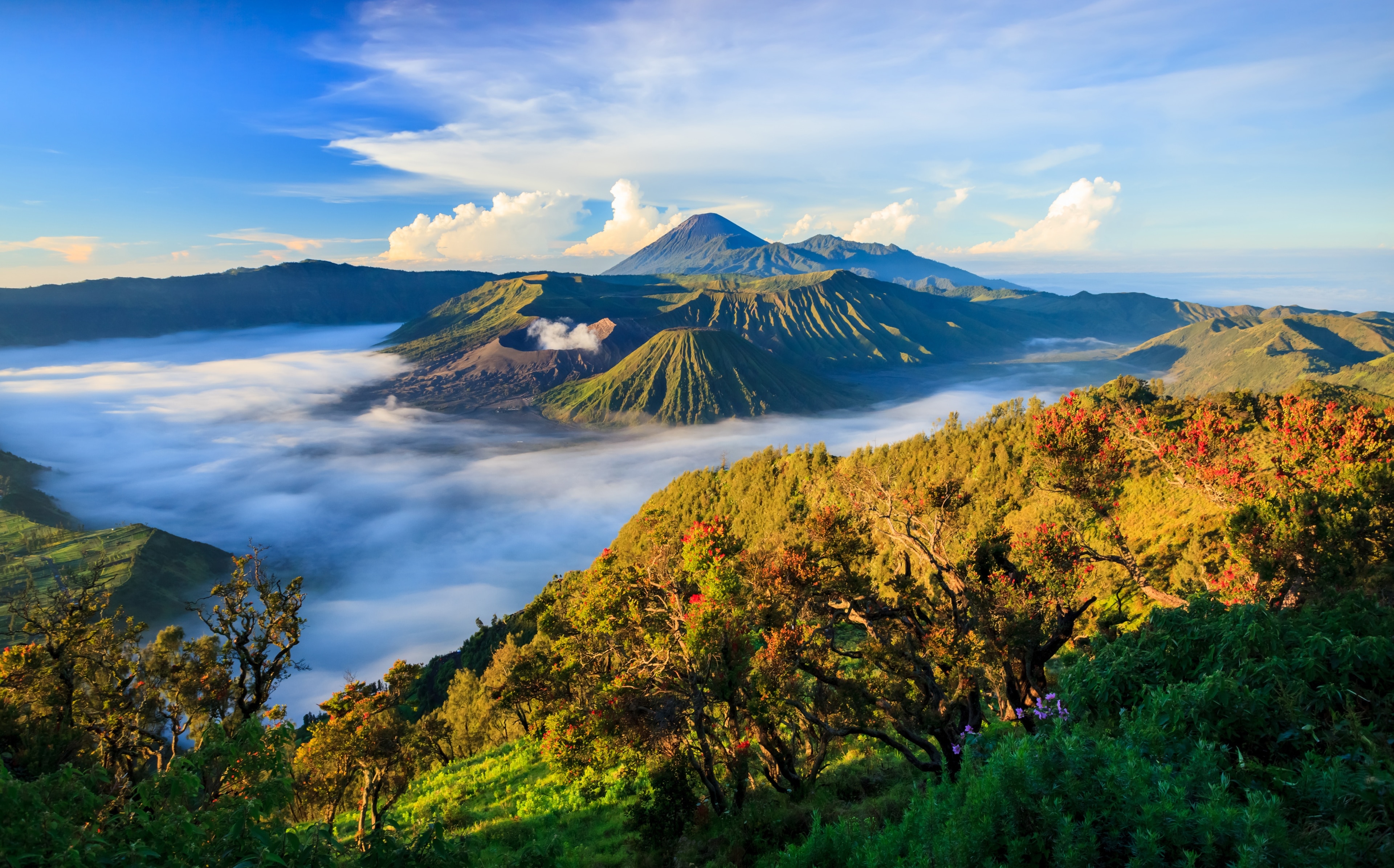
Next Popular Destinations in Indonesia is a Mount Bromo, Semeru, and the Tengger caldera national park. This national park includes Mount Bromo, Semeru, and the Tengger caldera. Located in East Java, Indonesia, Bromo Tengger Semeru National Park is one of the country’s most iconic and visited natural landmarks. The park spans over 800 square kilometers and includes dramatic volcanic landscapes, active mountains, highland villages, and a unique cultural heritage. It is home to Mount Bromo, the smoking crater that attracts thousands of visitors each year, as well as Mount Semeru, Java’s highest peak and an active stratovolcano.
Tourist Attractions
The most popular attraction is Mount Bromo (2,329 meters), famous for its otherworldly landscape. Visitors typically begin their journey before dawn to witness the sunrise from Mount Penanjakan, where panoramic views reveal a sea of clouds surrounding Bromo and its neighboring craters. The sight is both breathtaking and surreal.
Another major highlight is Mount Semeru (3,676 meters), which is favored by more adventurous trekkers. Reaching its summit requires a two-day hike, but the reward is an unforgettable view and the chance to see one of the most active volcanoes in Indonesia puff smoke every 20–30 minutes.
The Whispering Sands (Pasir Berbisik) is a vast desert-like area of volcanic sand that offers a dramatic backdrop for photography and horseback riding. Nearby is Teletubbies Hill (Bukit Teletubbies), a green savannah with rolling hills that contrasts beautifully with the surrounding black volcanic sand.
The region is also home to the Tenggerese people, who practice a unique blend of Hinduism and Javanese culture. During the Yadnya Kasada Festival, villagers climb Bromo’s crater and throw offerings of crops, animals, and other goods into the volcano as a tribute to their gods.
Hotels and Accommodation
The park offers a variety of accommodations, from basic guesthouses to more comfortable lodges. The village of Cemoro Lawang is the closest base to Mount Bromo and provides convenient access to the viewpoint and crater.
Lava View Lodge is one of the most popular places to stay, with rooms that offer direct views of Mount Bromo. For a more luxurious experience, Jiwa Jawa Resort Bromo combines comfort with artistic and eco-conscious design, offering fine dining and even an art gallery.
Budget travelers can find homestays such as Café Lava Hostel or Bromo Permai, which provide clean and simple accommodations with friendly local service.
Entertainment and Activities
While the national park is primarily focused on natural beauty and adventure tourism, there are several engaging activities for visitors:
- Jeep tours are the most common way to explore the park, taking visitors from their hotel to sunrise viewpoints, Bromo crater, Whispering Sands, and the savannah.
- Horseback riding is available at the base of Mount Bromo, where local Tenggerese guide tourists across the sands to the foot of the volcano.
- Hiking and trekking offer more immersive ways to explore the area, especially for those interested in climbing Mount Semeru or exploring nearby waterfalls such as Madakaripura Waterfall, a mystical site hidden within lush cliffs.
At night, stargazing is a rewarding experience due to the park’s high altitude and low light pollution.
Local Cuisine and Specialties
The chilly climate of the highlands makes hot local dishes particularly comforting. A must-try is rawon, a black beef soup made with keluak (black nuts), often served with rice and sambal. Soto Ayam (chicken soup) is another favorite, as well as Bakso Malang, a meatball soup native to East Java.
Local street vendors and warungs (small eateries) offer simple but delicious meals. One popular highland drink is wedang jahe, a traditional hot ginger tea that helps warm the body in the cold morning temperatures.
Don’t miss local snacks like tape ketan (fermented sticky rice) and tempeh crisps, which reflect the region’s agricultural richness.
9. Popular Destinations in Indonesia: Tanjung Puting, Central Kalimantan

Next Popular Destinations in Indonesia is Tanjung Puting National Park. Tanjung Puting National Park, located in Central Kalimantan on the island of Borneo, Indonesia, is one of the world’s most fascinating destinations for wildlife lovers, especially those interested in orangutans. This lush tropical rainforest, sprawling over 4,000 square kilometers, offers a unique combination of adventure, ecological wonder, and cultural discovery.
Tourist Attractions
The main attraction of Tanjung Puting is its orangutan conservation efforts. The park is home to one of the largest wild populations of orangutans in the world, making it a vital sanctuary for this endangered species. Visitors can witness these intelligent primates in their natural habitat at several feeding stations such as Camp Leakey, Pondok Tanggui, and Tanjung Harapan. These camps, established for rehabilitation and research, are accessible via guided riverboat tours.
Camp Leakey is the most famous, founded in the 1970s by Dr. Biruté Galdikas, one of the world’s leading primatologists. It remains an important center for research and conservation and offers visitors a rare chance to observe orangutans up close in the wild.
Besides orangutans, the park is also home to proboscis monkeys, gibbons, clouded leopards, crocodiles, and over 200 species of birds. River cruises along the Sekonyer River provide scenic views of dense jungle, wildlife sightings, and the magical experience of floating under a canopy of stars.
Accommodation and Hotels
Since Tanjung Puting is a remote area, accommodations are typically eco-friendly and integrated with nature. One of the most unique ways to experience the park is by staying on a “klotok”, a traditional wooden riverboat. These boats are converted into floating lodges that offer sleeping quarters, meals, and guides — perfect for multi-day river safaris.
For those seeking land-based lodging, Rimba Orangutan Eco Lodge is a popular choice, located near the park’s entrance. It offers sustainable amenities, solar-powered energy, and easy access to jungle trails. Another option is Pondok Tangguy Guest House, a simple but comfortable base close to one of the orangutan feeding stations.
Entertainment and Activities
Tanjung Puting is not about flashy entertainment or nightlife; instead, it offers immersive, nature-based experiences. Jungle trekking, birdwatching, and canoeing are popular activities for those looking to connect deeply with the forest.
Guided tours often include educational talks about orangutan behavior and rainforest ecology. At night, some tours offer firefly watching along the riverbanks — a truly magical sight as trees light up with thousands of glowing insects.
Cultural interactions are also possible, especially if you visit nearby Dayak villages. Here, visitors can learn about traditional crafts, rituals, and ways of life from the indigenous people of Borneo.
Local Cuisine and Specialties
The food in and around Tanjung Puting is typically Indonesian with Dayak influences. Meals are often served onboard klotok boats and include local, fresh ingredients. Grilled fish, tempeh, sautéed jungle vegetables, and spicy sambal sauces are common fare.
A must-try dish is Patin Bakar, a grilled river catfish seasoned with local spices and wrapped in banana leaves. Sayur Rotan (rattan vegetable soup) is another unique dish made from young rattan shoots — slightly bitter but nutritious and flavorful.
Local fruits like rambutan, durian, and salak (snake fruit) are also abundant in the region and are often served fresh or as desserts.
For drinks, try Es Cincau (grass jelly drink) or Teh Talua, a traditional egg tea with a rich, creamy texture.
10. Popular Destinations in Indonesia: Tana Toraja, South Sulawesi

Next Popular Destinations in Indonesia is Tana Toraja. Located in the highlands of South Sulawesi, Indonesia, Tana Toraja is a unique cultural destination known for its dramatic landscapes, mystical funeral rites, and elaborately carved traditional houses. Far from the typical tropical beaches of Indonesia, Tana Toraja offers an enriching experience deeply rooted in ancient customs and nature’s beauty.
Tourist Attractions
The primary draw of Tana Toraja is its traditional culture and architecture, especially the Tongkonan, the iconic boat-shaped ancestral houses decorated with intricate carvings and buffalo horns. These houses are not just homes but serve as family temples passed down through generations.
One of the most fascinating cultural experiences in Tana Toraja is witnessing the Rambu Solo’ funeral ceremony. These elaborate events can last several days and involve traditional dances, buffalo sacrifices, and rituals to honor the deceased and help guide their souls to the afterlife. Visitors are often welcome to observe with respect.
Several burial sites also offer insight into Torajan beliefs. Lemo features graves carved into cliffs, complete with wooden effigies called tau-tau, representing the deceased. Kete Kesu, a UNESCO-recognized village, showcases ancient Tongkonan houses and a ceremonial ground surrounded by rice fields and hanging graves. Another unique site is Londa, a burial cave with human skulls and bones laid out naturally over centuries.
For nature lovers, a visit to Batutumonga, located on the slopes of Mount Sesean, offers breathtaking views over rice terraces and misty mountains. It’s also a great starting point for hiking and exploring the Torajan countryside.
Hotels and Accommodation
Tana Toraja has a variety of accommodations that blend comfort with traditional aesthetics. Toraja Heritage Hotel is one of the most well-known options. Built in the style of traditional Tongkonan houses, it offers modern amenities, a swimming pool, and a restaurant, making it ideal for international visitors.
Misiliana Hotel, located near Rantepao (the main town), is another comfortable choice with Torajan-style rooms, spacious gardens, and excellent hospitality. For travelers seeking a more local and immersive experience, several homestays in villages like Kete Kesu or Batutumonga provide basic but authentic lodging hosted by local families.
Entertainment and Activities
Tana Toraja doesn’t offer nightlife in the traditional sense, but its cultural richness and scenic beauty provide ample entertainment. Attending a funeral ceremony or village festival can be a deeply moving and educational experience.
Traditional dance performances, often held during ceremonies or special occasions, are mesmerizing. These dances usually involve colorful costumes, chanting, and symbolic movements representing Torajan myths and spirituality.
Guided tours and treks are popular activities. Many local guides offer hikes through rice terraces, bamboo forests, and coffee plantations. You can also visit traditional markets in Rantepao, where you’ll find unique handicrafts, spices, and water buffalo—the most prized animals in Torajan culture.
Local Cuisine and Food
Torajan cuisine is hearty, flavorful, and deeply tied to local customs. One of the most iconic dishes is Pa’piong, meat (usually pork or chicken) mixed with herbs and spices, then cooked inside a bamboo tube over an open fire. This method infuses the meat with a smoky, aromatic flavor.
Another local specialty is Pammarasan, buffalo meat cooked in a black nut sauce made from Pangium edule seeds. The dish has a rich, slightly bitter taste and is traditionally served during ceremonies.
You’ll also find a variety of grilled and stewed dishes, along with locally grown Toraja coffee, renowned for its deep flavor and low acidity. Coffee tours are available, where you can learn about the growing and roasting process and taste fresh brews.
Restaurants like Cafe Aras in Rantepao offer a blend of Torajan dishes and Indonesian favorites in a cozy setting with cultural decor and live music on occasion. For more casual dining, local warungs (small eateries) offer affordable and authentic meals.
11. Popular Destinations in Indonesia: Petitenget, Bali, Indonesia

Next Popular Destinations in Indonesia is Petitenget Temple. Petitenget Temple, locally known as Pura Petitenget, is one of Bali’s most revered sea temples. Nestled in the lively area of Seminyak in Badung Regency, this sacred site offers visitors a unique blend of spirituality, cultural richness, coastal beauty, and modern comfort. Though located amidst one of Bali’s most fashionable neighborhoods, Petitenget Temple maintains its traditional charm and religious significance, making it a must-visit for culture seekers and spiritual travelers alike.
Tourist Attractions
The centerpiece of this area is, of course, Petitenget Temple itself. Dating back to the 16th century, this Hindu temple is dedicated to sea deities and serves as a protective guardian of Bali’s coastline. The temple features traditional Balinese architecture, stone carvings, and a tranquil atmosphere. It is especially lively during religious ceremonies such as Odalan, held every 210 days, when the temple grounds fill with colorful offerings, gamelan music, and traditional dance performances.
Just steps from the temple is Petitenget Beach, a wide and scenic stretch of volcanic sand, perfect for sunset viewing and peaceful walks. Unlike the busier Kuta Beach, Petitenget is relatively calm, attracting both locals and visitors seeking a more serene vibe.
Nearby, travelers can also explore other cultural and natural attractions, including Masceti Temple and Batu Belig Beach, both offering a peaceful retreat away from the crowds.
Hotels and Accommodation
Petitenget and the surrounding Seminyak area offer a wide range of accommodations, from luxury resorts to boutique villas. Just a short walk from the temple, The Legian Bali is a high-end beachfront resort known for its impeccable service, infinity pool, and beachfront dining. For travelers seeking a more intimate setting, Hotel Indigo Bali Seminyak Beach offers artsy rooms with local touches and modern luxury.
Alila Seminyak, another five-star favorite, combines eco-friendly design with elegant comfort and offers stunning views of the ocean. For those on a budget, Tijili Seminyak Hotel offers vibrant, cozy rooms just a few minutes from the temple and the beach.
Entertainment and Activities
The Petitenget area is a hotspot for stylish entertainment and vibrant nightlife. Seminyak’s beach clubs are world-renowned, and Potato Head Beach Club is just a stone’s throw away from the temple. With its beachfront pool, eclectic design, and daily DJ performances, it’s a great place to unwind with a cocktail and watch the sunset.
Ku De Ta, another iconic beach club nearby, combines dining, music, and a lively atmosphere. If you’re looking for something more laid-back, Biku offers traditional afternoon tea in a charming Javanese-style setting.
Yoga lovers can take classes at Seminyak Yoga Shala, while shoppers will enjoy browsing the designer boutiques and local art shops that line Petitenget Street. For cultural entertainment, visitors can check for traditional Balinese dance performances that occasionally take place at the temple or nearby cultural centers.
Local Cuisine and Specialties
Petitenget is home to some of Bali’s best dining spots, offering both local and international cuisine. For an authentic taste of Balinese food, head to Warung Eny, a humble eatery known for its grilled chicken, satay, and nasi campur (mixed rice with side dishes). Another great option is Made’s Warung, a long-standing favorite serving local dishes like Babi Guling (roast suckling pig) and Lawar (spiced meat and coconut salad).
For dessert, try klepon—sweet rice cakes filled with palm sugar—or dadar gulung, green coconut pancakes filled with sweet grated coconut. International culinary gems such as Sardine, with its rice field views, and Merah Putih, offering high-end Indonesian cuisine in a stunning setting, are also nearby.
12. Popular Destinations in Indonesia: Bangka Belitung Islands
Known for its white sandy beaches and giant granite rocks, the island is also famous for the film ‘Laskar Pelangi’.
Recommended hotel: BW Suite Belitung, strategic location and complete facilities.
13. Popular Destinations in Indonesia: Derawan, East Kalimantan
Derawan is an underwater paradise with coral reefs, turtles, and other marine life. Suitable for diving and snorkeling.
Hotel recommendation: Derawan Dive Lodge, special accommodation for sea lovers.
14. Popular Destinations in Indonesia: Wakatobi, Southeast Sulawesi
Wakatobi National Park is one of the best diving spots in the world. Its coral reefs and marine ecosystems are very well preserved.
Recommended hotel: Patuno Resort Wakatobi, accommodation with direct access to the beach.
15. Popular Destinations in Indonesia: Thousand Islands, DKI Jakarta
A marine tourism destination near Jakarta consisting of dozens of islands, suitable for a short vacation with the natural beauty of the sea.
Hotel recommendation: Pulau Macan Eco Resort, famous for its eco-luxury concept.
16. Popular Destinations in Indonesia: Pink Beach, East Nusa Tenggara
A unique beach with rare pink sand. Becoming one of the icons of Indonesian marine tourism.
Recommended hotel: Sudamala Resort, located not far from the main tourist area.
17. Popular Destinations in Indonesia: Karimunjawa, Central Java
The islands north of Jepara offer beautiful sea, snorkeling, and natural beaches. Still relatively quiet compared to other destinations.
Recommended hotel: Breve Azurine Lagoon Resort, a highly recommended exclusive resort.
18. Popular Destinations in Indonesia: Bunaken National Park, North Sulawesi
Hotel: Bunaken Oasis Dive Resort and Spa
19. Popular Destinations in Indonesia: Way Kambas National Park, Lampung
Hotel: Hotel Horizon Lampung
20. Popular Destinations in Indonesia: Lore Lindu National Park, Central Sulawesi
Hotel: Swiss-Belhotel Silae Palu
21. Popular Destinations in Indonesia: Candi Pandawa Lima, Wonosobo, Central Java
Located in the heart of Java, Indonesia, Candi Pandawa Lima is a cultural and spiritual destination that offers visitors a unique glimpse into ancient Javanese-Hindu heritage. Named after the five heroic brothers from the Mahabharata—Yudhishthira, Bhima, Arjuna, Nakula, and Sahadeva—this temple site blends mythology, art, and sacred architecture in a serene, natural setting.
Tourist Attractions
Candi Pandawa Lima is more than just a temple; it’s an immersive experience into epic legends and Javanese history. The complex typically features five distinct shrines, each representing one of the Pandava brothers, adorned with intricate carvings and symbolic sculptures. These temples reflect the strong influence of Hindu culture in Indonesia before the arrival of Islam.
Visitors can explore the main sanctum, where offerings are still made during traditional ceremonies. The surrounding gardens are filled with statues, lotus ponds, and shaded walking paths, offering a peaceful escape from city life.
Guided tours are often available, explaining the stories behind the sculptures and murals. Some sites also include cultural performance spaces, where traditional wayang kulit (shadow puppet) shows or Ramayana dance dramas are held, bringing the myths of the Mahabharata to life.
Nearby, travelers can enjoy the natural beauty of Java, such as volcanic hills, hidden waterfalls, and rice terraces that surround the temple grounds. Many visitors take part in short treks or photography tours that showcase the region’s dramatic landscapes.
Accommodation and Hotels
There are several comfortable lodging options near Candi Pandawa Lima that cater to different types of travelers. For a relaxing and immersive stay, Pandawa Resort & Villas offers boutique accommodations with views of the countryside. The architecture of the resort is inspired by Javanese royal palaces, complete with carved wooden décor and spacious courtyards.
Budget travelers might opt for local guesthouses like Dewi Inn or Griya Arjuna, which provide a more authentic, homestay experience. These places often include home-cooked meals and personal recommendations from the hosts, enriching the cultural visit.
For luxury seekers, larger towns nearby may offer 4-star resorts with pools, spas, and access to guided tours of nearby cultural sites and nature attractions.
Entertainment and Cultural Activities
Visitors to Candi Pandawa Lima are often treated to cultural experiences that reflect the rich traditions of Java. Evening performances of gamelan music, classical Javanese dance, and shadow puppetry are popular events, especially during religious festivals or local holidays.
Workshops are also available for those interested in learning batik painting, keris making, or Javanese calligraphy. These hands-on activities are both educational and memorable, offering a deeper connection to Indonesian heritage.
Many tourists also take part in meditation and yoga retreats held near the temple complex, drawn by the area’s spiritual ambiance and natural tranquility.
Local Cuisine and Specialties
No visit to Central Java is complete without sampling its rich and flavorful cuisine. A local favorite is Gudeg, a sweet stew made from young jackfruit, coconut milk, and palm sugar, usually served with rice and chicken. It’s a dish deeply associated with Javanese tradition.
Another popular dish is Nasi Liwet, a savory rice dish cooked in coconut milk and served with shredded chicken, boiled eggs, and spicy sambal. For something lighter, Tempe Mendoan—thin, crispy fried fermented soybean cakes—is a must-try street snack.
Local markets and warungs (small restaurants) around the temple serve these dishes fresh and affordably. Don’t forget to try Jamu, a traditional herbal drink made from turmeric, ginger, and tamarind, known for its health benefits.
For a more upscale dining experience, Arjuna Resto & Garden near the temple offers a fusion of Javanese and international dishes in a beautiful outdoor setting.
22. Popular Destinations in Indonesia: Mount Merbabu, Central Java
Mount Merbabu, located between Magelang and Boyolali in Central Java, is a dormant stratovolcano known for its scenic hiking trails and panoramic views. Popular among trekking enthusiasts, its summit offers breathtaking sights of Mount Merapi, Mount Sumbing, and surrounding valleys.
The main tourist activity is hiking, with routes from Selo, Suwanting, and Wekas being the most popular. Along the trail, you’ll pass through pine forests, grasslands, and Edelweiss fields. For non-hikers, the Selo Village offers a peaceful mountain experience, cultural insights, and stunning views.
Accommodation options near Mount Merbabu include eco-lodges, homestays, and guesthouses. D’Emerick Hotel in nearby Salatiga and Joglo Agung Guesthouse near Selo are popular for their comfort and mountain ambiance.
For entertainment, enjoy a peaceful sunrise trek or attend local cultural events in nearby villages. Photography, camping, and birdwatching are also common activities.
Local cuisine includes Sego Megono (rice with young jackfruit), Sate Kelinci (grilled rabbit skewers), and Wedang Jahe (hot ginger drink), offering a warm taste of traditional Javanese flavors after a cold mountain hike.
Mount Merbabu is a hidden gem for nature lovers seeking serenity, adventure, and cultural richness.
23. Popular Destinations in Indonesia: Mount Lawu, Central Java
Mount Lawu, located on the border of Central and East Java, is a sacred and scenic destination rich in culture, history, and natural beauty. The mountain is a favorite among hikers, spiritual seekers, and nature lovers.
Tourist attractions include the famous Cetho and Sukuh Temples, ancient Hindu temples with unique architecture and mystical carvings. Hikers often climb to the summit of Mount Lawu (3,265 meters) via Cemoro Sewu or Cemoro Kandang trails, enjoying lush forests, meadows, and panoramic views.
For accommodation, options like Villa Cemara Lawu and Komajaya Komaratih Hotel in Tawangmangu offer comfortable stays with cool mountain air and scenic views.
Entertainment is focused on outdoor and cultural experiences: hiking, camping, visiting local tea plantations, and soaking in Tawangmangu Waterfall (Grojogan Sewu), a popular family-friendly site.
Mount Lawu also offers unique local cuisine, especially the beloved Sego Liwet, Sate Kelinci (rabbit satay), and Wedang Ronde, a warm ginger dessert drink. Traditional food stalls and markets provide authentic flavors of Javanese highland cooking.
Whether you seek adventure, tranquility, or cultural exploration, Mount Lawu offers a memorable experience rooted in spiritual and natural wonder.
24. Popular Destinations in Indonesia: Dieng Plateau, Central Java
Located in Central Java, Dieng Plateau is a highland area famous for its mystical landscape, ancient temples, and cool climate. Perched at over 2,000 meters above sea level, Dieng offers stunning volcanic scenery and cultural heritage.
Top attractions include Sikidang Crater, where visitors can witness bubbling mud pools and sulfur steam. Telaga Warna (Color Lake) amazes with its shifting hues caused by mineral content and sunlight. Nearby, the Arjuna Temple Complex, dating back to the 7th century, showcases early Hindu architecture in Indonesia.
For accommodations, options range from homestays to comfortable hotels like Dieng Cool Guesthouse and Tani Jiwo Hostel, offering panoramic views and cozy rooms.
Dieng is more about natural beauty than nightlife, but evening performances of Wayang (shadow puppetry) and the Dieng Culture Festival offer rich cultural entertainment.
Local cuisine includes Mie Ongklok, a savory noodle dish served with peanut sauce and satay, and carica fruit, a papaya-like fruit made into sweet syrup or jam. Don’t miss trying tempe kemul (crispy soybean fritters), perfect with a cup of local ginger tea in the chilly weather.
Dieng Plateau is a hidden gem waiting to be explored.
Hotel: D’Qiano Hot Spring Waterpark
25. Popular Destinations in Indonesia: Sarangan Lake, East Java
Located on the slopes of Mount Lawu in East Java, Sarangan Lake is a tranquil mountain lake surrounded by misty hills and pine forests. Also known as Telaga Sarangan, it offers cool, refreshing weather and stunning natural views, making it a perfect weekend escape.
Tourist Attractions include paddle boat rides around the lake, horse-drawn carriage tours, and hiking trails to nearby waterfalls like Tirtosari Waterfall. The calm atmosphere makes it ideal for photography, nature walks, and enjoying sunrise or sunset by the water.
Hotels and Accommodations range from budget guesthouses to mid-range hotels such as Hotel Sarangan Indah and Puri Sarangan, offering lake views and mountain air.
Entertainment is family-friendly and low-key, including traditional markets, boat rentals, and seasonal events like cultural festivals and art performances.
Local Food Specialties include sate kelinci (rabbit satay), a unique and popular dish in this region, along with nasi pecel and warm wedang ronde to suit the chilly climate. You can find many food stalls and local warungs around the lake.
Whether you’re seeking peace, nature, or a taste of local culture, Sarangan Lake offers a relaxing highland retreat with authentic Javanese charm.
26. Popular Destinations in Indonesia: Air Kalak Hot Springs, North Sumatra
Air Kalak Hot Springs: A Hidden Gem in North Sumatra, Indonesia
Tucked away in the rugged volcanic landscapes of North Sumatra, Indonesia, Air Kalak Hot Springs offers a soothing retreat for nature lovers and adventure seekers alike. Located near Mount Sibayak, close to the town of Berastagi, this natural hot spring is known for its healing properties, scenic views, and tranquil atmosphere. While not yet overrun by mass tourism, Air Kalak Hot Springs offers an authentic and refreshing Indonesian experience.
Tourist Attractions
The main attraction, of course, is the Air Kalak Hot Springs themselves. Heated by volcanic activity from nearby Mount Sibayak, the waters are rich in minerals like sulfur and magnesium, which are believed to have therapeutic benefits for the skin and joints. Visitors can soak in the steaming pools while enjoying views of the surrounding forest and mountains.
Nearby, you can embark on a hike up Mount Sibayak, one of Indonesia’s most accessible volcanoes. The climb takes about 2–3 hours and is suitable for beginners. From the summit, you’re rewarded with panoramic views of the crater, fumaroles emitting steam, and sometimes even a colorful sulfur lake. After the hike, soaking in Air Kalak’s warm water is the perfect way to relax tired muscles.
A short drive from Air Kalak leads to Berastagi, a charming highland town known for its fruit markets, colonial buildings, and cool climate. You can also visit Gundaling Hill for a stunning sunset view over Mount Sibayak and Mount Sinabung.
Accommodation and Hotels
Although Air Kalak is located in a remote area, visitors have several accommodation options, especially in the nearby town of Berastagi.
One of the most popular choices is the Mikie Holiday Resort, a family-friendly hotel with modern amenities, spacious rooms, and a beautiful garden setting. The resort also has its own amusement park, perfect for families with children.
For budget travelers, Hotel Sibayak International offers clean rooms, good service, and proximity to local attractions, including Mount Sibayak and the hot springs. If you’re looking for a more nature-immersed experience, some local guesthouses and eco-lodges offer homestays near the base of the volcano.
For a unique experience, you can also camp near the hot springs or along the Mount Sibayak trail, but it is important to check weather conditions and local regulations beforehand.
Entertainment and Activities
Entertainment around Air Kalak revolves mostly around nature and outdoor activities. The region is ideal for trekking, photography, and birdwatching. Guided tours can be arranged to explore nearby waterfalls, such as Sipiso-Piso, one of Indonesia’s tallest waterfalls, located about an hour’s drive from Berastagi.
For a more cultural experience, visit Lingga Village, a traditional Karo Batak settlement, to see traditional longhouses and learn about the customs of the Karo people.
In the evenings, some hotels and guesthouses offer bonfire gatherings, live acoustic music, or cultural dance performances, especially during the weekend or peak tourist seasons. It’s a great way to unwind and connect with locals and fellow travelers.
Local Cuisine and Specialties
The highland region of North Sumatra offers a mix of Batak cuisine and traditional Indonesian flavors. One of the local specialties is Babi Panggang Karo (Karo-style roast pork), a spicy and savory dish typically served with rice, sambal, and a traditional soup called “saksang.” While this is a must-try for meat lovers, Muslim travelers should be aware that it’s a non-halal dish.
For a vegetarian-friendly option, try Sayur Ubi Tumbuk, a dish made with mashed cassava leaves cooked in coconut milk with local herbs. Another popular snack is pisang goreng (fried banana), often enjoyed with sweetened condensed milk or cheese.
The local markets in Berastagi are a haven for fresh tropical fruits such as marquisa (passion fruit), salak (snake fruit), and avocados, which are sold fresh or in juice form.
Coffee lovers shouldn’t miss trying Kopi Sidikalang, a rich and aromatic coffee grown in the highlands, known for its deep, earthy flavor and smooth finish.
27. Popular Destinations in Indonesia: Togean Island, Central Sulawesi
Togean Island, nestled in the heart of the Tomini Gulf in Central Sulawesi, Indonesia, is an untouched tropical paradise known for its crystal-clear waters, vibrant coral reefs, and unique cultural experiences. As part of the Togean Islands National Park, this destination offers a tranquil retreat for travelers looking to escape the crowds and immerse themselves in nature and traditional island life.
Tourist Attractions
The main attraction of Togean Island is its exceptional marine biodiversity. The waters around the island are part of the Coral Triangle, home to some of the richest coral reef ecosystems in the world. Diving and snorkeling here reveal vibrant reefs, sea turtles, reef sharks, and countless colorful fish species. Popular dive spots include Una Una Volcano, Taupan Reef, and Batu Daka Wall.
Another must-see is Kabalutan Village, a traditional Bajo (sea gypsy) settlement built entirely on stilts above the sea. Visitors can interact with the friendly locals, learn about their seafaring lifestyle, and experience a truly authentic Indonesian maritime culture.
Nature lovers will enjoy trekking through the island’s dense tropical forests, where they may encounter rare birds, coconut crabs, and lush vegetation. The Malenge Island wooden bridge, stretching from the mainland to a small islet, offers a scenic walk over turquoise waters and is one of the most photogenic spots in the region.
Accommodation and Hotels
Despite its remote location, Togean Island offers a variety of eco-friendly accommodations that blend seamlessly with the natural environment. Most lodges and resorts are built using traditional materials and are often run by local families or expats committed to sustainable tourism.
One of the top choices is Fadhila Cottages, located on Kadidiri Island. It offers wooden beachfront bungalows, delicious home-cooked meals, and access to some of the best snorkeling reefs right off the shore. Another favorite is Island Retreat, offering cozy cottages, hammocks by the sea, and personalized dive trips.
For travelers seeking a dive-focused experience, Black Marlin Dive Resort and Kadidiri Paradise provide excellent facilities for both beginners and advanced divers, along with comfortable stays and sea views.
Entertainment and Activities
Togean Island isn’t about nightlife or loud entertainment. Instead, it offers a range of outdoor and water-based activities that cater to eco-tourists, divers, and peace seekers. Scuba diving and snorkeling are the main highlights, with several dive centers offering certification courses and guided reef explorations.
Visitors can also enjoy kayaking through mangrove forests, island-hopping to nearby islets, or simply relaxing on white-sand beaches without another soul in sight. Sunset watching is a daily ritual, often accompanied by gentle waves and the sounds of tropical birds.
Cultural activities include visiting local villages to witness traditional fishing methods, coconut processing, and boat crafting. Some lodges also offer cooking classes, where guests can learn to prepare local Togeanese dishes using fresh ingredients.
Local Cuisine and Specialties
Food in Togean Island reflects the simplicity and freshness of its surroundings. Most meals are made from freshly caught seafood, rice, and tropical vegetables and fruits. Guests staying at lodges typically enjoy family-style meals, with menus that change daily based on what’s available.
A local favorite is ikan bakar (grilled fish) served with sambal (spicy chili sauce), steamed rice, and sautéed greens. Other popular dishes include gudeg sulawesi, a sweet jackfruit stew, and jepa, a type of sago flatbread eaten with grilled fish or coconut milk sauce.
Fresh coconuts, bananas, and papayas are available in abundance, often served as dessert. Coffee lovers will also enjoy local Sulawesi coffee, known for its bold and earthy flavor.
Hotel: Fadhila Cottage
28. Popular Destinations in Indonesia: Wasur National Park, Papua
Wasur National Park, located in the southeastern part of Papua, Indonesia, is often referred to as the “Amazon of the East” due to its vast wetlands and incredible biodiversity. Covering over 4,300 square kilometers, it is home to rare species such as cassowaries, wallabies, birds of paradise, and saltwater crocodiles. The park also features savannahs, swamps, rivers, and mangroves—making it a haven for nature lovers and bird watchers.
Tourist Attractions
Visitors can explore the park’s scenic landscapes through guided eco-tours, bird-watching treks, and boat rides across its wetlands. Cultural encounters with the indigenous Marind tribe offer a unique insight into traditional Papuan lifestyles.
Hotels and Accommodation
Accommodation options are modest, mostly guesthouses in Merauke city such as Hotel Halogen or Swiss-Belhotel Merauke, which serve as gateways to the park.
Entertainment and Activities
Activities include wildlife photography, canoeing, and participating in traditional ceremonies. It’s a peaceful destination for eco-tourism and cultural immersion.
Local Food
Local cuisine features sago, roasted fish, and Papeda, a staple made from sago starch, often served with yellow fish soup or smoked meat, offering a taste of authentic Papuan flavor.
Hotel: Swiss-Belhotel Merauke
Cartenz Pyramid, Papua
Cartenz Pyramid, Papua
Rising majestically at 4,884 meters above sea level, Puncak Jaya—also known as Carstensz Pyramid—is Indonesia’s highest peak and the tallest island mountain on Earth. Nestled within the Sudirman Range of Central Papua, this iconic summit is renowned not only for its challenging climbs but also for its rare tropical glaciers, which are now on the brink of extinction due to climate change.
A Natural Wonder Under Threat
Puncak Jaya’s glaciers, often referred to as “eternal snow,” have been a symbol of natural beauty and cultural significance for centuries. However, recent studies indicate a rapid decline in glacier mass. Since 1850, the glacier area has shrunk by 98%, from 19.3 square kilometers to just 0.34 square kilometers in 2020 . Experts predict that these glaciers could vanish entirely by 2026, a loss that would mark the disappearance of the last tropical glaciers in the western Pacific.
Cultural and Environmental Significance
For the indigenous Amungme people, Puncak Jaya is more than a mountain; it’s a sacred site known as Nemangkawi Ninggok, or “Peak of the White Arrow.” The glaciers hold spiritual value and are integral to their cultural identity. Environmentally, the melting glaciers threaten local ecosystems, potentially disrupting water sources and biodiversity that have adapted to the cold alpine conditions.
Impact on Local Communities
The retreating glaciers are not just an environmental concern but also a socio-economic one. Communities in the Puncak Regency have experienced recurrent droughts, leading to food insecurity. In response, the Indonesian government has initiated the construction of food storage facilities to mitigate the effects of prolonged dry seasons.
Climbing and Tourism
Despite the challenges, Puncak Jaya remains a coveted destination for climbers worldwide. Its unique equatorial glaciers offer a rare climbing experience. However, the window to witness this natural phenomenon is closing rapidly. Tourism operators are now emphasizing sustainable practices to preserve the mountain’s delicate environment.
Karimunjawa National Park, Central Java
Hotel: Kura Kura Resort
Madakaripura Waterfall, East Java
Hotel: Bromo Terrace Hotel
White Crater, West Java
Hotel: Sutanraja Hotel & Convention Centre
Tumpak Sewu Waterfall

Nestled in the Lumajang Regency of East Java, Indonesia, Tumpak Sewu Waterfall—also known as Coban Sewu—is a breathtaking natural wonder that captivates visitors with its unique formation and stunning surroundings. Often referred to as the “Niagara of Java,” this 120-meter-tall waterfall is renowned for its semi-circular curtain of water cascading down lush green cliffs, creating a mesmerizing spectacle.
Tourist Attractions
The primary attraction is, of course, the Tumpak Sewu Waterfall itself. Visitors can experience the waterfall from two main vantage points: the panoramic viewpoint at the top, offering a comprehensive view of the falls, and the base, accessible via a challenging 30-minute trek through steep and slippery paths. The descent includes navigating through rocks and crossing rivers, making it essential to wear appropriate footwear and consider hiring a local guide for safety .
Adjacent to Tumpak Sewu is Goa Tetes, a smaller yet enchanting waterfall and cave system. This spot is perfect for those seeking a refreshing dip after the trek and offers a serene environment to relax and enjoy nature.
For adventure enthusiasts, the area also offers ATV (All-Terrain Vehicle) tours. These guided tours provide an exhilarating way to explore the rugged terrains surrounding Mount Semeru and the lava canals, adding an extra thrill to your visit.
Accommodation
While many travelers opt for a day trip from Malang or Surabaya, staying overnight near Tumpak Sewu allows for a more immersive experience. Several accommodations cater to different preferences and budgets:
- Sambas Cottages: Located close to the waterfall, this accommodation offers cozy cottages with modern amenities, a garden, and an outdoor swimming pool. Guests appreciate the friendly staff and the proximity to the falls.
- Kaliningrat Cottage 2: Situated in Pronojiwo, this 3-star hotel features air-conditioned rooms with private bathrooms and terraces. It’s a comfortable option for those seeking a peaceful stay near the waterfall.
- Dear Traveler Guest House & Glamping: For a unique experience, this establishment offers both guest house accommodations and luxurious glamping options. Guests can enjoy comfortable beds, semi-open restrooms, and outdoor lounging areas, blending comfort with nature.
Entertainment and Activities
Beyond the waterfall, the region offers various activities to enhance your visit:
- Trekking and Hiking: The area is a haven for trekkers, with trails leading to various viewpoints and natural attractions. The trek to the base of Tumpak Sewu is particularly popular, offering an up-close experience of the waterfall’s power and beauty.
- Photography: The unique formation of Tumpak Sewu makes it a favorite among photographers. Whether capturing the panoramic view from the top or the misty base, the waterfall provides countless opportunities for stunning shots.
- Local Tours: Engaging local guides can enrich your experience, offering insights into the area’s geology, flora, and fauna. Some tours also include visits to nearby attractions like Telaga Biru and Mount Semeru.
Local Cuisine
East Java’s culinary scene is rich and diverse, offering flavors that reflect the region’s cultural heritage. While visiting Tumpak Sewu, be sure to try:
- Pecel: A traditional Javanese salad consisting of boiled vegetables topped with spicy peanut sauce, often served with rice or lontong (compressed rice cake).
- Sate (Satay): Skewered and grilled meat, typically served with a savory peanut sauce. It’s a popular street food that’s both flavorful and satisfying.
- Es Teler: A refreshing dessert made from a mix of fruits like avocado, jackfruit, and young coconut, combined with condensed milk and shaved ice.
Local eateries and warungs (small family-owned businesses) near the waterfall often serve these dishes, providing an authentic taste of East Java’s culinary delights.
Conclusion
Tumpak Sewu Waterfall stands as a testament to East Java’s natural beauty, offering visitors a blend of adventure, relaxation, and cultural experiences. Whether you’re trekking to the base, capturing its grandeur through your lens, or savoring local delicacies, Tumpak Sewu promises an unforgettable journey into the heart of Indonesia’s enchanting landscapes.
Hotel: Gracia Spa Resort
Cimahi Waterfall, West Java
Hotel: Stevie G Hotel
Carita Beach, Banten
Hotel: Lippo Carita Condotel
Soul Temple, Karawang, West Java
Located in Batujaya, Karawang Regency, West Java, Candi Jiwa (translated as “Soul Temple”) is a remarkable yet lesser-known archaeological site in Indonesia. This Buddhist temple complex, dating back to the 5th–7th century AD, is part of the Batujaya Temple Complex, consisting of around 30 ancient temple mounds. Candi Jiwa stands out for its circular stupa-shaped structure, which sets it apart from the more well-known Hindu-Buddhist temples like Borobudur and Prambanan.
Though modest in size, Candi Jiwa holds significant historical and cultural value and offers visitors a peaceful and reflective experience amid the rice fields and rural landscape.
Tourist Attractions
The main attraction is Candi Jiwa itself—a red-brick Buddhist stupa set on a rounded base. It lacks elaborate carvings but has a calming spiritual aura. Surrounding the main stupa are smaller ruins of other temples in the Batujaya Archaeological Site, such as Candi Blandongan, which contains some preserved reliefs and architectural elements.
The area around the temple is surrounded by lush rice paddies and traditional Sundanese villages, offering a serene rural charm. Visitors often enjoy walking or cycling through the countryside to explore nearby villages, interact with locals, and observe traditional farming practices.
The Batujaya Site Museum, though small, displays artifacts discovered in the area, including ancient pottery, statues, and Buddhist relics that give insights into the temple’s historical and religious significance.
Hotels and Accommodation
Since Candi Jiwa is located in a rural area, hotel options nearby are limited. However, you can find decent accommodations in Karawang city, which is about 30 to 45 minutes away by car. Some popular options include:
- Resinda Hotel Karawang – A modern, upscale hotel offering full amenities such as a pool, spa, and restaurant, ideal for international travelers.
- Delonix Hotel Karawang – A Japanese-style hotel popular among business travelers, offering comfortable rooms and a tranquil atmosphere.
- Swiss-Belinn Karawang – A mid-range option with good service and modern facilities.
For a more local experience, homestays in nearby villages may be available upon request, allowing guests to experience Sundanese hospitality and rural life.
Entertainment and Activities
Entertainment around Candi Jiwa focuses on cultural and outdoor experiences rather than nightlife or commercial attractions. Visitors can engage in:
- Cycling and walking tours around the paddy fields and temples
- Village visits, where travelers can learn about traditional weaving, rice farming, and Sundanese customs
- Birdwatching and photography, especially during sunrise or sunset when the landscape glows with natural light
- Attending local festivals or traditional performances (with prior arrangement), such as Sundanese music or dance
Cultural researchers and spiritual seekers may find the tranquil atmosphere ideal for quiet reflection, meditation, or even writing and sketching.
Traditional Food and Local Cuisine
The Karawang region offers a wide variety of Sundanese cuisine, known for its freshness, lightness, and rich flavors. Some traditional foods to try when visiting the area include:
- Nasi Liwet – A savory rice dish cooked with coconut milk, served with fried chicken, tofu, tempeh, and sambal (spicy chili paste)
- Sayur Asem – A tangy tamarind-based vegetable soup that is refreshing and commonly served with rice
- Pecel Lele – Fried catfish served with rice and sambal, often accompanied by fresh vegetables
- Tahu Gejrot – Fried tofu soaked in a sweet, spicy, and tangy sauce made of vinegar, garlic, and chili
Local warungs (small eateries) near the site or in nearby towns often serve these dishes in traditional style on banana leaves. For a more modern setting, the hotels in Karawang have restaurants offering both local and international cuisine.
Conclusion
While Candi Jiwa may not yet be a mainstream tourist destination, its spiritual significance, peaceful setting, and cultural richness make it a valuable stop for travelers seeking to explore the ancient Buddhist heritage of West Java. Combined with authentic rural experiences, traditional food, and warm local hospitality, a visit to Candi Jiwa offers a unique window into Indonesia’s diverse cultural tapestry.
Hotel: Sawarna Little Hula Hula
Bukit Lawang, North Sumatra
An ecotourism paradise renowned for its orangutan conservation in Gunung Leuser National Park.
Recommended Hotel:
Ecolodge Bukit Lawang
Lake Maninjau, West Sumatra
A volcanic lake with a serene atmosphere, perfect for a relaxing holiday.
Recommended Hotel:
Maninjau Indah Hotel
Nihiwatu Beach, Sumba, NTT
Discovering Nihiwatu Beach: A Hidden Gem in Sumba, Indonesia
Nestled along the untouched coastline of Sumba Island, Nihiwatu Beach—also known as Nihi Sumba—presents an extraordinary fusion of natural wonder, eco-conscious luxury, and community transformation. This off-the-beaten-path destination in East Nusa Tenggara invites travelers to experience something far more meaningful than a typical beach escape.
Where Untamed Nature Meets Adventure
With over two kilometers of pristine shoreline, Nihiwatu is not just for sun-seekers. It’s a paradise for surfers, hikers, and adventurers alike. The beach boasts “Occy’s Left,” one of the world’s most coveted left-hand surf breaks, offering thrilling waves for professionals and seasoned enthusiasts.
But the beach is just the beginning. Visitors can trek through lush hillsides, explore hidden waterfalls, or ride horses along the sand at sunrise—all while surrounded by panoramic ocean views and Sumba’s unspoiled wilderness. Every experience is designed to honor the land and its rhythms.
Making a Difference Through Every Stay
Unlike most luxury resorts, Nihi Sumba doesn’t exist in isolation from the local community. Its philanthropic arm, the Sumba Foundation, was created to empower surrounding villages. This initiative has brought transformative changes through:
- Access to clean water by drilling over 80 fresh wells
- Malaria prevention programs that have dramatically lowered infection rates
- Nutritional school programs and education support for local children
The impact is measurable—and deeply rooted. By staying at Nihi, guests become part of a movement that uplifts the island and its people while preserving their cultural legacy.
A Blueprint for Responsible Travel
Nihi Sumba has received global praise for redefining what it means to be a luxury destination. Far from simply offering five-star amenities, the resort champions sustainable development and meaningful travel.
Its eco-conscious operations, use of local materials, and zero-waste philosophy all reflect its dedication to the planet. Visitors are also encouraged to take part in volunteering activities, cultural immersion programs, and educational tours—creating an experience that nourishes both the heart and the mind.
How to Get There
Though remote, reaching Nihiwatu Beach is easier than you might think. Here’s how to get there:
- Book an international flight to Bali’s Ngurah Rai International Airport (DPS).
- From Bali, take a domestic flight to Tambolaka Airport (TMC) in West Sumba.
- The resort team arranges ground transport for the scenic journey to the beach.
It’s a journey of beauty and anticipation—one that prepares you for a destination unlike any other.
Why Nihiwatu Beach Belongs on Your Travel List
Whether you’re a surfer chasing legendary waves, a traveler craving authenticity, or a guest looking to give back through travel, Nihiwatu Beach offers a one-of-a-kind experience. It combines world-class comfort with deep cultural and environmental engagement—proving that travel can be both indulgent and impactful.
In an era where responsible travel matters more than ever, Nihiwatu Beach stands as a shining example. Come not just to explore—but to contribute, to connect, and to leave transformed.
Recommended Hotel:
Nihi Sumba Resort
Gili Trawangan, Lombok, West Nusa Tenggara
45. Gili Trawangan, Lombok, West Nusa Tenggara
A small island bustling with nightlife and water sports.
Recommended Hotel:
Pearl of Trawangan
Gili Meno, Lombok, NTB
46. Gili Meno, Lombok, NTB
Quieter than Gili Trawangan, suitable for honeymoon.
Recommended Hotel:
Mahamaya Boutique Resort
Gili Air, Lombok, West Nusa Tenggara
47. Gili Air, Lombok, West Nusa Tenggara
A combination of a calm atmosphere and complete facilities for tourists.
Hotel Recommendation:
Slow Gili Air
Baluran National Park, East Java
48. Baluran National Park, East Java
Nicknamed “Africa van Java”, with vast savannas and wildlife.
Hotel Recommendation:
Watu Dodol Resort
Meru Betiri National Park, East Java
49. Meru Betiri National Park, East Java
A place for preserving turtles and other rare animals.
Recommended Hotel:
Kalibaru Cottages
Tanjung Lesung Beach, Banten
50. Tanjung Lesung Beach, Banten
A family-friendly beach, with complete facilities and views of the Sunda Strait.
Recommended Hotel:
Tanjung Lesung Beach Hotel
Mount Batur, Bali
51. Mount Batur, Bali
Trekking to the top of an active volcano to enjoy a spectacular sunrise.
Hotel Recommendation:
Lakeview Hotel & Restaurant
Jatiluwih, Bali
52. Jatiluwih, Bali
The terraced rice fields are a UNESCO heritage site.
Recommended Hotel:
Dewi Sinta Hotel & Restaurant
Lembang, West Java
53. Lembang, West Java
Mountainous area with many family and educational tourist attractions.
Hotel Recommendation:
The Gaia Hotel Bandung
Mount Tangkuban Perahu, West Java
54. Mount Tangkuban Perahu, West Java
The volcano is famous for its large crater which is directly accessible.
Hotel Recommendation:
Sari Ater Hotel & Resort
Kiluan Bay, Lampung
55. Kiluan Bay, Lampung
The best place to see wild dolphins and marine tourism.
Recommended Hotel:
Kiluan Island Cottages
Pandawa Beach, Bali
Located on the southern coast of Bali, Pandawa Beach—often referred to as “Secret Beach”—is a rising star among the island’s many scenic destinations. Tucked behind towering limestone cliffs and offering breathtaking ocean views, Pandawa Beach combines natural beauty, cultural significance, and modern tourist facilities, making it a perfect escape for both local and international travelers.
Tourist Attractions
The entrance to Pandawa Beach is marked by giant statues carved into the limestone walls of the cliffs. These statues depict characters from the Mahabharata epic, such as Yudhishthira, Bhima, Arjuna, Nakula, and Sahadeva, collectively known as the Pandawa brothers—hence the name of the beach. These towering figures add a unique cultural and mythical atmosphere to the destination.
The beach itself stretches for about 1 kilometer, with soft white sand and clear turquoise waters. It’s ideal for sunbathing, swimming, kayaking, and stand-up paddleboarding. The relatively calm waves make it a family-friendly location. For those seeking a more spiritual experience, nearby temples such as Pura Gunung Payung provide a quiet place for reflection and a glimpse into local Balinese Hindu practices.
Cliffside views and photo spots are abundant, especially during sunrise and sunset. Pandawa is less commercialized than beaches like Kuta or Seminyak, offering a more relaxed and intimate beach experience.
Hotels and Accommodation
While there are no major resorts directly on Pandawa Beach, the surrounding area—especially in the upscale Uluwatu and Nusa Dua regions—offers a wide range of accommodations.
For luxury travelers, The Ritz-Carlton Bali and The Apurva Kempinski in nearby Nusa Dua provide five-star experiences with beachfront views, elegant Balinese architecture, and world-class service. Closer to the cliffs, boutique resorts such as Pandawa Hill Resort and Bukit Pandawa Golf & Country Club Villas offer unique stays with direct access to the beach or scenic golf courses.
Budget-friendly guesthouses and homestays can also be found in the village of Kutuh, a short drive from the beach, offering affordable and authentic Balinese hospitality.
Entertainment and Activities
Pandawa Beach is a haven for outdoor enthusiasts. Visitors can rent kayaks or try paragliding from the cliffs for a bird’s-eye view of the Indian Ocean. Local tour operators also offer camel rides along the beach, a fun and unusual activity that’s popular with families.
Live performances of traditional Balinese dance and music can sometimes be seen during festivals or local ceremonies in the area. While the beach itself is quiet in terms of nightlife, the surrounding Bukit Peninsula hosts famous entertainment venues like Omnia Dayclub and Savaya Bali, perfect for those who wish to explore Bali’s party scene after sunset.
Nearby, the famous Uluwatu Temple offers daily Kecak dance performances at sunset, providing an incredible mix of drama, dance, and coastal views.
Local Cuisine and Food Specialties
Beachside warungs (local eateries) and small restaurants line the shore, serving fresh seafood and Indonesian staples. Grilled fish, calamari, and prawns are often prepared directly in front of guests using traditional Balinese marinades.
Don’t miss trying Ayam Betutu—a spiced chicken dish slow-cooked in banana leaves—or Lawar, a traditional Balinese mix of vegetables, coconut, and minced meat seasoned with rich herbs and spices.
Cold young coconuts, Bali coffee, and tropical juices are also widely available, perfect for sipping while watching the waves.
For a more upscale dining experience, visitors can head to nearby resorts or beach clubs offering fusion dishes and gourmet interpretations of Indonesian cuisine.
Bukit Tinggi, West Sumatra
57. Bukit Tinggi, West Sumatra
A historic city with a strong Minangkabau cultural feel.
Recommended Hotel:
Novotel Bukittinggi
Ora Beach, Maluku
58. Ora Beach, Maluku
A hidden beach with crystal clear water, like the Maldives of Indonesia.
Recommended Hotel:
Ora Beach Eco Resort
Lake Poso, Central Sulawesi
59. Lake Poso, Central Sulawesi
One of the deepest lakes in Indonesia, perfect for relaxation and exploration of local culture.
Hotel Recommendation:
SenTanTor Pososari Resort
Luwuk, Central Sulawesi
60. Luwuk, Central Sulawesi
A hidden paradise with white sand beaches, waterfalls and ecotourism that is gaining popularity.
Hotel Recommendation:
Estrella Hotel & Conference
Morotai Island, North Maluku
61. Morotai Island, North Maluku
A historic island in World War II, with beautiful beaches and exotic underwater tours.
Recommended Hotel:
Morotai Green Hotel
Wakatobi Islands, Southeast Sulawesi
62. Wakatobi Islands, Southeast Sulawesi
A diver’s paradise, renowned for its world-class coral reefs.
Recommended Hotel:
Wakatobi Dive Resort
Labengki, Southeast Sulawesi
63. Labengki, Southeast Sulawesi
Often called mini Raja Ampat, with its enchanting lagoons and small islands.
Recommended Hotel:
Labengki Beach Hut
Tureloto Beach, Nias
64. Tureloto Beach, Nias
A beach without waves because it is protected by large coral, suitable for swimming and snorkeling.
Hotel Recommendation:
Soliga Hotel Nias
Weh Island, Aceh
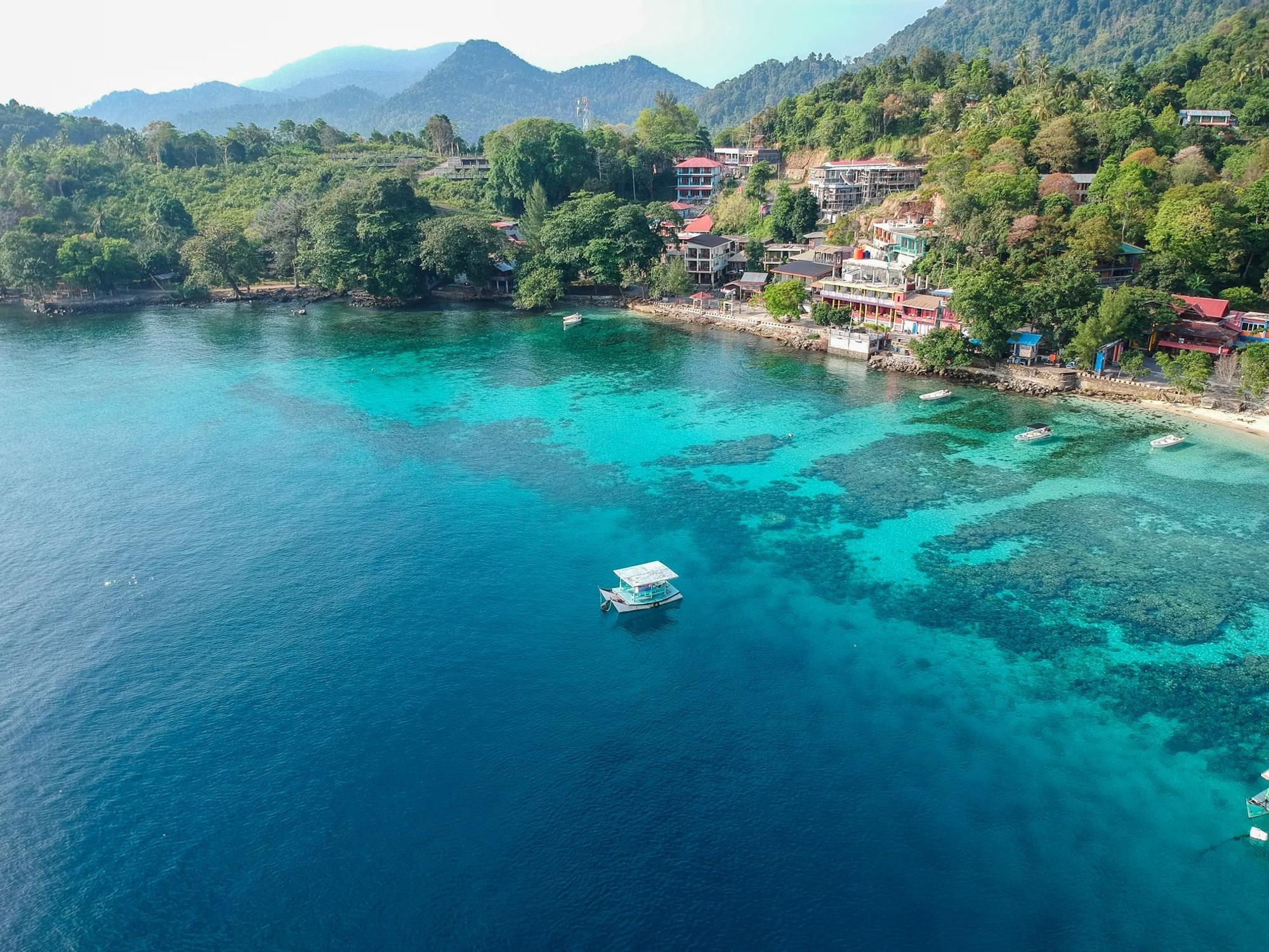
Located off the northern tip of Sumatra in Aceh Province, Weh Island (locally known as Pulau Weh) is one of Indonesia’s best-kept secrets. Known for its crystal-clear waters, vibrant marine life, and peaceful atmosphere, Weh Island is a perfect escape for travelers looking for natural beauty, adventure, and cultural authenticity.
Tourist Attractions
The main draw of Weh Island is its stunning beaches and world-class dive sites. Gapang Beach and Iboih Beach are the most popular coastal destinations, offering soft sand, calm waters, and excellent snorkeling just a few steps from shore. The coral reefs here are teeming with colorful fish, turtles, and even the occasional reef shark.
One of the island’s most famous dive spots is Batee Tokong, known for its rich underwater biodiversity and strong currents that attract experienced divers. Another highlight is the Rubiah Island Marine Park, just off the coast of Iboih Beach. Snorkeling or diving around Rubiah Island offers breathtaking encounters with untouched coral gardens and vibrant marine species.
For non-divers, Weh Island offers plenty to explore on land. The KM 0 (Kilometer Zero) Monument, located at the westernmost point of Indonesia, is a symbolic and scenic site where visitors can enjoy panoramic ocean views and take photos at this geographic milestone. Hikers will enjoy the volcanic Mount Jaboi, a relatively easy trek that leads to active fumaroles and a unique volcanic landscape.
Hotels and Accommodation
Weh Island caters mainly to eco-tourists and diving enthusiasts, so most accommodations are locally owned and focused on sustainability. Casa Nemo Beach Resort & Spa near Gapang Beach is one of the top-rated places to stay, offering comfortable bungalows with sea views and traditional Indonesian design. The resort also features a spa, restaurant, and eco-friendly initiatives.
For budget travelers, Yulia’s Bungalows and Olala Café & Bungalows in Iboih provide cozy, affordable rooms in a relaxed, beachside setting. Divers often choose to stay at Freddies Santai Sumur Tiga, a welcoming guesthouse with private beach access, great food, and a friendly community vibe.
Entertainment and Activities
Entertainment on Weh Island is all about nature and tranquility. There are no nightclubs or flashy bars—instead, visitors can enjoy evening bonfires on the beach, live acoustic music at local cafés, or simply watch the sunset while sipping fresh coconut water.
The island is also a haven for diving and snorkeling, with multiple dive shops such as Lumba Lumba Diving Centre and Rubiah Tirta Divers offering courses, guided dives, and equipment rentals. Kayaking, paddleboarding, and boat tours are also available for those who want to explore the coastline or nearby islands.
Cultural experiences include visiting local markets in Sabang, the island’s main town, and learning about Acehnese traditions and Islamic heritage. The locals are warm and welcoming, and many are happy to share stories about their island and culture.
Local Cuisine and Specialties
Weh Island’s food scene is a blend of Acehnese and coastal flavors. Fresh seafood is the star of most meals, with dishes like Ikan Bakar (grilled fish) served with spicy sambal and rice. Cumi-cumi saus hitam (squid in its own ink sauce) is another local delicacy that’s rich and flavorful.
Don’t miss Mie Aceh, a spicy noodle dish cooked with beef or seafood, commonly served at local warungs (small eateries). For something lighter, Rujak Aceh, a sweet and spicy fruit salad, is a refreshing snack on a hot day.
For drinks, fresh kopi Aceh (Acehnese coffee) is a must-try. Many cafes serve it with condensed milk or brew it traditionally using a filter cloth. For dessert, try Timphan Cookies, a banana-based steamed cake wrapped in banana leaf, often available in local markets.
Bintan Island, Riau Islands
67. Bintan Island, Riau Islands
An exclusive island with many luxury resorts, perfect for a relaxing holiday.
Recommended Hotel:
The Sanchaya Bintan
Way Kambas National Park, Lampung
68. Way Kambas National Park, Lampung
The natural habitat of the Sumatran elephant and a conservation center for rare animals.
Hotel Recommendation:
Satwa Sumatra Elephant Ecolodge
Alas Purwo National Park, Banyuwangi
69. Alas Purwo National Park, Banyuwangi
Dense forest and surfing beach Plengkung (G-Land), popular among world surfers.
Recommended Hotel:
Ketapang Indah Hotel
Madakaripura Waterfall, Probolinggo
70. Madakaripura Waterfall, Probolinggo
The highest waterfall in East Java which is legendary and mystical.
Recommended Hotel:
Bromo Terrace Hotel
White Crater of Tinggi Raja, North Sumatra
71. White Crater of Tinggi Raja, North Sumatra
Sulfur crater with beautiful turquoise hot water.
Recommended Hotel:
Green Hill City Hotel
Anambas Islands, Riau Islands
72. Anambas Islands, Riau Islands
An exclusive tropical destination with crystal clear sea water and beautiful beaches.
Hotel Recommendation:
Anambas Resort
Sipiso-piso Waterfall, North Sumatra
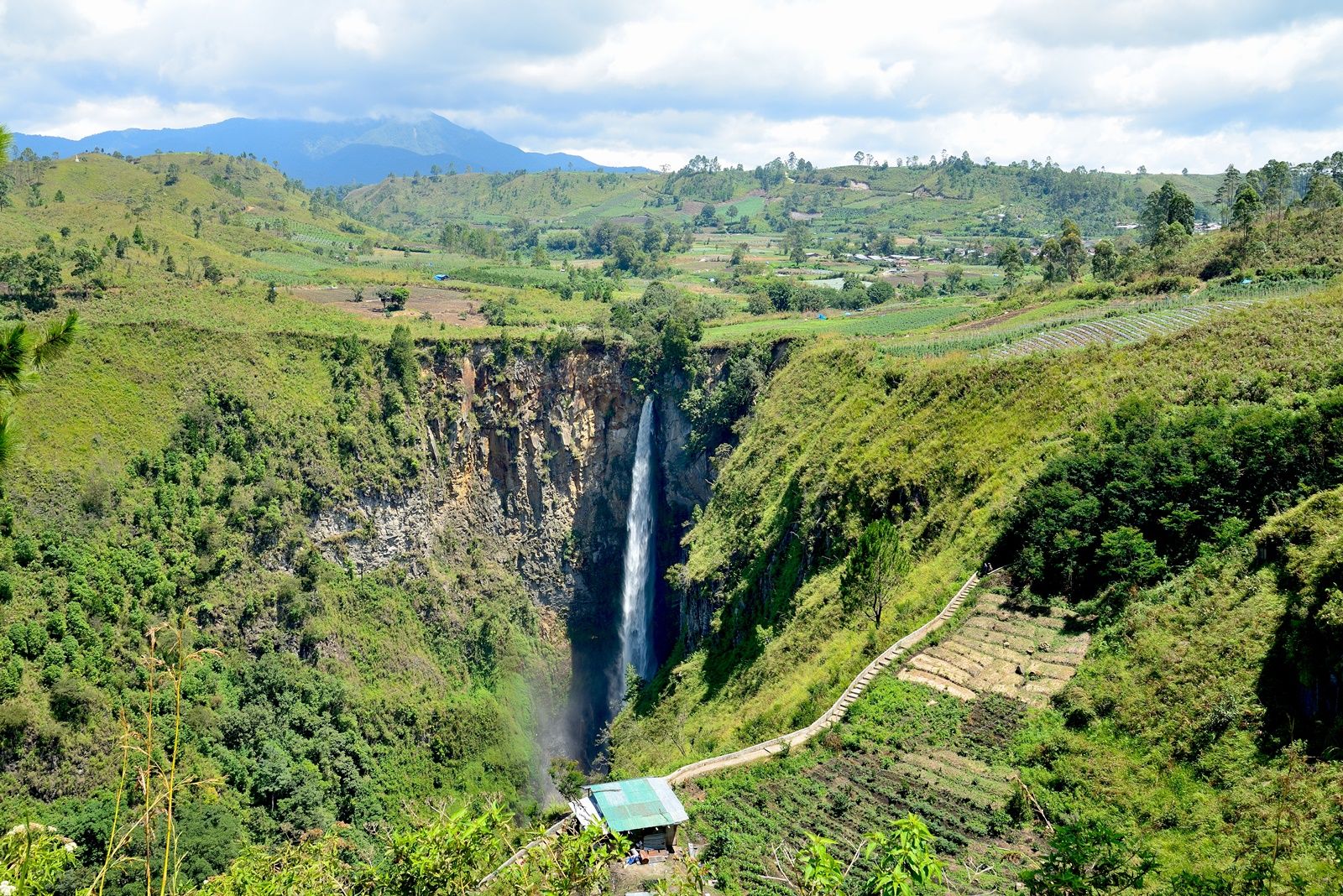
Nestled in the highlands of North Sumatra, Sipiso-Piso Waterfall stands as one of Indonesia’s tallest and most breathtaking waterfalls. Plunging from a height of 120 meters, this natural wonder is situated near Tongging Village in Karo Regency, offering visitors a mesmerizing blend of cascading waters, lush greenery, and panoramic views of Lake Toba.
Tourist Attractions
The primary allure of Sipiso-Piso is its dramatic descent into a deep gorge, creating a misty ambiance that captivates photographers and nature enthusiasts alike. From the viewing platforms near the parking area, visitors can witness the waterfall’s full grandeur against the backdrop of Lake Toba and Samosir Island. For the adventurous, a descent of approximately 500 steps leads to the base of the waterfall, where the thunderous roar and cool spray offer an immersive experience.
Beyond the waterfall, the surrounding area boasts several attractions. The nearby Sapo Juma Flower Garden, located just minutes away, showcases vibrant blooms set against the serene landscape of Lake Toba. Additionally, Bukit Gundul, also known as Bukit Sipiso-Piso, offers a camping experience above the clouds, with sunrise views revealing the expanse of the Karo highlands and the shimmering waters of Lake Toba.
Accommodation and Hotels
While many visitors opt for day trips, the region offers various accommodations for those wishing to extend their stay. In Tongging Village, several guesthouses and homestays provide basic amenities with the added charm of local hospitality. For more comfortable lodging, the town of Berastagi, approximately 35 kilometers away, offers options such as Sinabung Hills Resort, known for its scenic views and modern facilities, and Hotel Kalang Ulu, which boasts proximity to local eateries and attractions.
Entertainment and Activities
Sipiso-Piso and its environs cater to travelers seeking tranquility and natural beauty rather than bustling nightlife. Activities include hiking to the base of the waterfall, exploring the flower gardens, and camping on nearby hills. Cultural enthusiasts can immerse themselves in the traditions of the Batak Karo people by visiting local villages, attending traditional dance performances, and exploring historical sites. Seasonal festivals in the region also offer insights into local customs and celebrations.
Local Cuisine
The culinary offerings around Sipiso-Piso reflect the rich heritage of the Batak Karo culture. A must-try dish is Arsik, a spicy grilled fish seasoned with andaliman, a native Sumatran pepper that imparts a unique flavor. Another delicacy is Saksang, a dish made from pork cooked in its own blood with a blend of spices, showcasing the bold flavors characteristic of Batak cuisine. For the adventurous palate, Pagit-pagit or Terites offers a traditional soup made from the partially digested grass from a ruminant’s stomach, cooked with spices and coconut milk—a testament to the region’s unique culinary traditions.
Local eateries and food stalls in Tongging Village serve these traditional dishes, allowing visitors to savor authentic flavors while enjoying views of Lake Toba. Additionally, the region’s markets offer fresh produce and local snacks, providing a taste of daily life in the highlands.
Getting There
Sipiso-Piso Waterfall is accessible via a scenic drive from Medan, the capital of North Sumatra. The journey covers approximately 100 kilometers and takes around 3 hours by car. Public transportation options include buses from Medan to Kabanjahe, followed by local transport to Tongging Village. The roads leading to the waterfall are well-maintained, offering travelers picturesque views of the highlands and Lake Toba along the way.
Parangtritis Beach, Yogyakarta
74. Parangtritis Beach, Yogyakarta
A legendary beach with strong cultural and spiritual values.
Hotel Recommendation:
Queen of the South Resort
Banda Neira, Central Maluku
75. Banda Neira, Central Maluku
The old city is full of colonial history and rich spices.
Recommended Hotel:
Mutiara Guesthouse Banda Neira
Lake Ranau, Lampung
76. Lake Ranau, Lampung
A natural volcanic lake with views of Mount Seminung on its shores.
Recommended Hotel:
Wisma Pusri Ranau
White Sand Beach, Situbondo
77. White Sand Beach, Situbondo
Family-friendly beach and marine activities such as snorkeling.
Recommended Hotel:
Hotel Sidomuncul 1
Love Island, Gorontalo
78. Love Island, Gorontalo
A romantic heart-shaped destination, perfect for a honeymoon.
Recommended Hotel:
Pulo Cinta Eco Resort
Bukit Duabelas National Park, Jambi
79. Bukit Duabelas National Park, Jambi
The traditional area of the Anak Dalam Tribe which maintains the tradition of living in the forest.
Hotel Recommendation:
Abadi Hotel & Convention Center Jambi
Gong Cave, Pacitan, East Java
80. Gong Cave, Pacitan, East Java
The cave with the most beautiful stalactites and stalagmites in Southeast Asia.
Hotel Recommendation:
Grand Bromo Pacitan Hotel
Derawan Island, East Kalimantan
81. Derawan Island, East Kalimantan
A hidden paradise with crystal clear sea water and protected green turtles.
Recommended Hotel:
Derawan Dive Resort
Tesso Nilo National Park, Riau
82. Tesso Nilo National Park, Riau
One of the national parks with high biodiversity, habitat of the Sumatran elephant.
Recommended Hotel:
Unigraha Hotel Pangkalan Kerinci
Lake Sentani, Papua
83. Lake Sentani, Papua
A beautiful lake surrounded by green hills and traditional Papuan villages.
Recommended Hotel:
Swiss-Belhotel Papua
Harau Valley, West Sumatra
84. Harau Valley, West Sumatra
A fertile valley with high cliffs and beautiful waterfalls, similar to a tropical version of the Grand Canyon.
Hotel Recommendation:
Harau Valley Resort
Pergasingan Hill, East Lombok
85. Pergasingan Hill, East Lombok
The best place to see the sunrise in Lombok and the view of the rice fields from above.
Recommended Hotel:
Sembalun Kita Cottage
Nihiwatu Beach, Sumba
87. Nihiwatu Beach, Sumba
One of the best beaches in the world, famous for its big waves and exclusive resorts.
Recommended Hotel:
Nihi Sumba Island Resort
Rote Island, NTT
88. Rote Island, NTT
The outermost island of southern Indonesia with its unique culture and exotic beaches.
Recommended Hotel:
Rote Island Lodge
Jodipan Colorful Village, Malang
89. Jodipan Colorful Village, Malang
A creative settlement transformed into an iconic, colorful photography spot.
Hotel Recommendation:
The Shalimar Boutique Hotel
Cibodas Botanical Gardens, Cianjur
90. Cibodas Botanical Gardens, Cianjur
A botanical garden with cool air, waterfalls, and a collection of rare plants.
Hotel Recommendation:
Novus Giri Resort & Spa
Baluran National Park, Banyuwangi
91. Baluran National Park, Banyuwangi
Nicknamed “Africa van Java” because of its savanna and wildlife such as deer and buffalo.
Recommended Hotel:
Kawah Ijen Inn
Tanjung Tinggi Beach, Belitung
92. Tanjung Tinggi Beach, Belitung
White sandy beach with giant granite rocks, location of the film Laskar Pelangi .
Hotel Recommendation:
Santika Premiere Beach Resort Belitung
Mount Papandayan, Garut
94. Mount Papandayan, Garut
An active volcano with beginner-friendly trekking trails and stunning crater views.
Hotel Recommendation:
Sabda Alam Hotel & Resort
Sebangau National Park, Central Kalimantan
95. Sebangau National Park, Central Kalimantan
Tropical peat forests are home to wild orangutans and high biodiversity.
Recommended Hotel:
Swiss-Belhotel Danum Palangkaraya
Ora Beach, Central Maluku
96. Ora Beach, Central Maluku
A serene tropical destination dubbed the Maldives of Indonesia.
Recommended Hotel:
Ora Beach Eco Resort
Jomblang Cave, Gunung Kidul
97. Jomblang Cave, Gunung Kidul
A vertical cave with rays of “heavenly light” penetrating during the day.
Recommended Hotel:
Jogja Village Inn
Dragon Village, Tasikmalaya
98. Dragon Village, Tasikmalaya
A traditional village that still maintains the traditional Sundanese lifestyle.
Recommended Hotel:
Horison Tasikmalaya
Sawarna Beach, Banten
99. Sawarna Beach, Banten
A natural beach suitable for surfing and camping, with unique rock formations.
Recommended Hotel:
Sawarna Paradiso
Alor Island, NTT
100. Alor Island, NTT
World class diving spots with authentic local culture.
Recommended Hotel:
Alor Tanapi Homestay
Final Thoughts: Your Journey Through Indonesia Awaits
From the misty highlands of Sumatra to the untouched shores of Papua, Indonesia offers far more than just beautiful sights, it offers stories, traditions, and an invitation to connect with something greater than yourself. After exploring these 100 popular destinations in Indonesia, one thing becomes clear: Indonesia is not just a place you visit, it’s a place that stays with you.
Whether you’re an adventure-seeker, a history buff, a culinary explorer, or someone who simply wants to unwind on a sun-soaked beach, Indonesia has something unforgettable for you. Each destination on this list is more than a pin on a map, it’s a unique experience waiting to be discovered, felt, and cherished.
As you plan your journey, don’t forget to travel responsibly. Respect local communities, protect the environment, and embrace the cultural richness each region has to offer. Sustainable travel ensures that Indonesia’s natural and cultural treasures remain vibrant for generations to come.
We hope this guide has sparked inspiration and made your travel planning a little easier. Let these destinations be your starting point, and remember, sometimes the most magical experiences come from the places you least expect.
So pack your bags, open your heart, and get ready to fall in love with the archipelago of wonders Indonesia.

